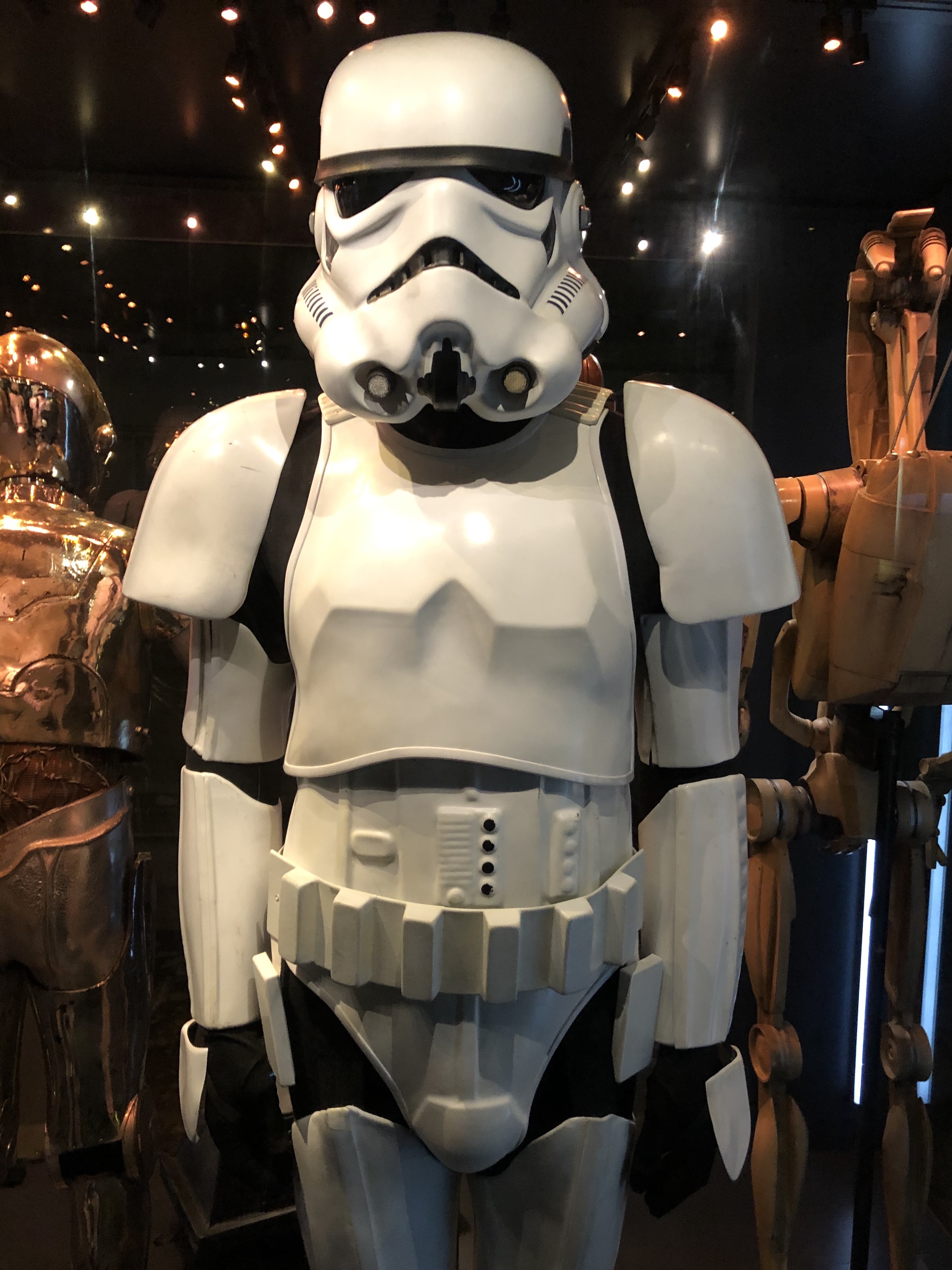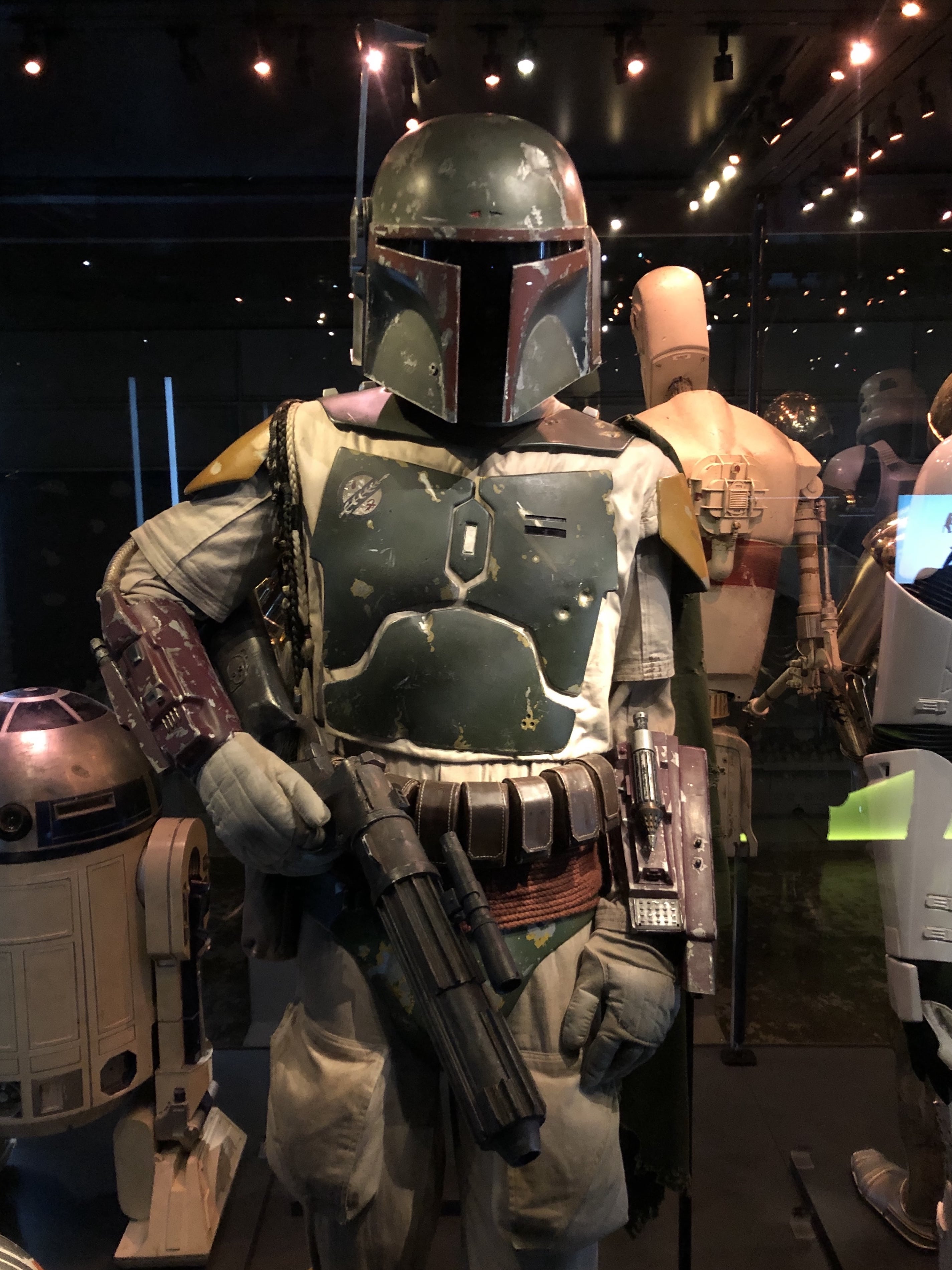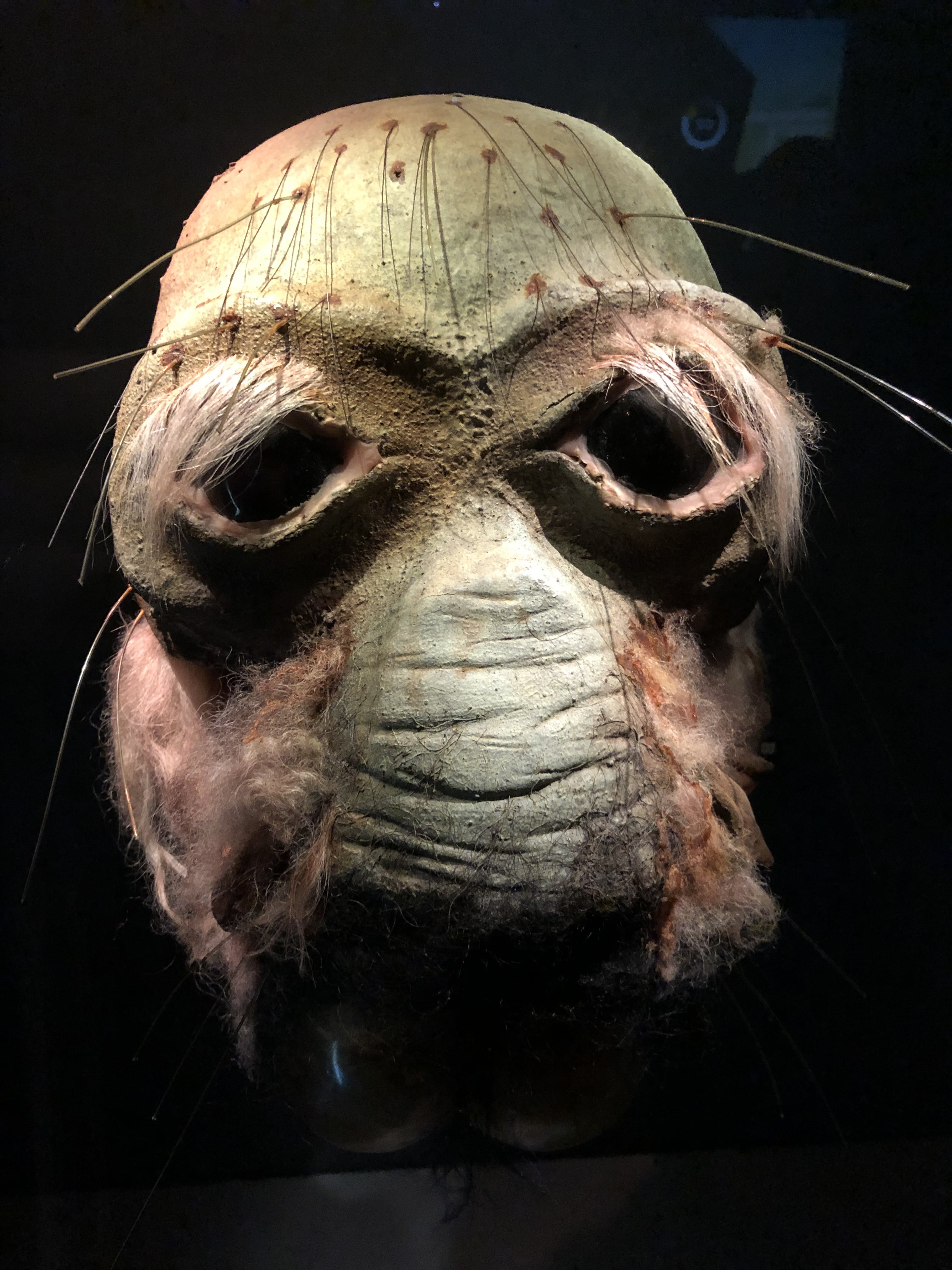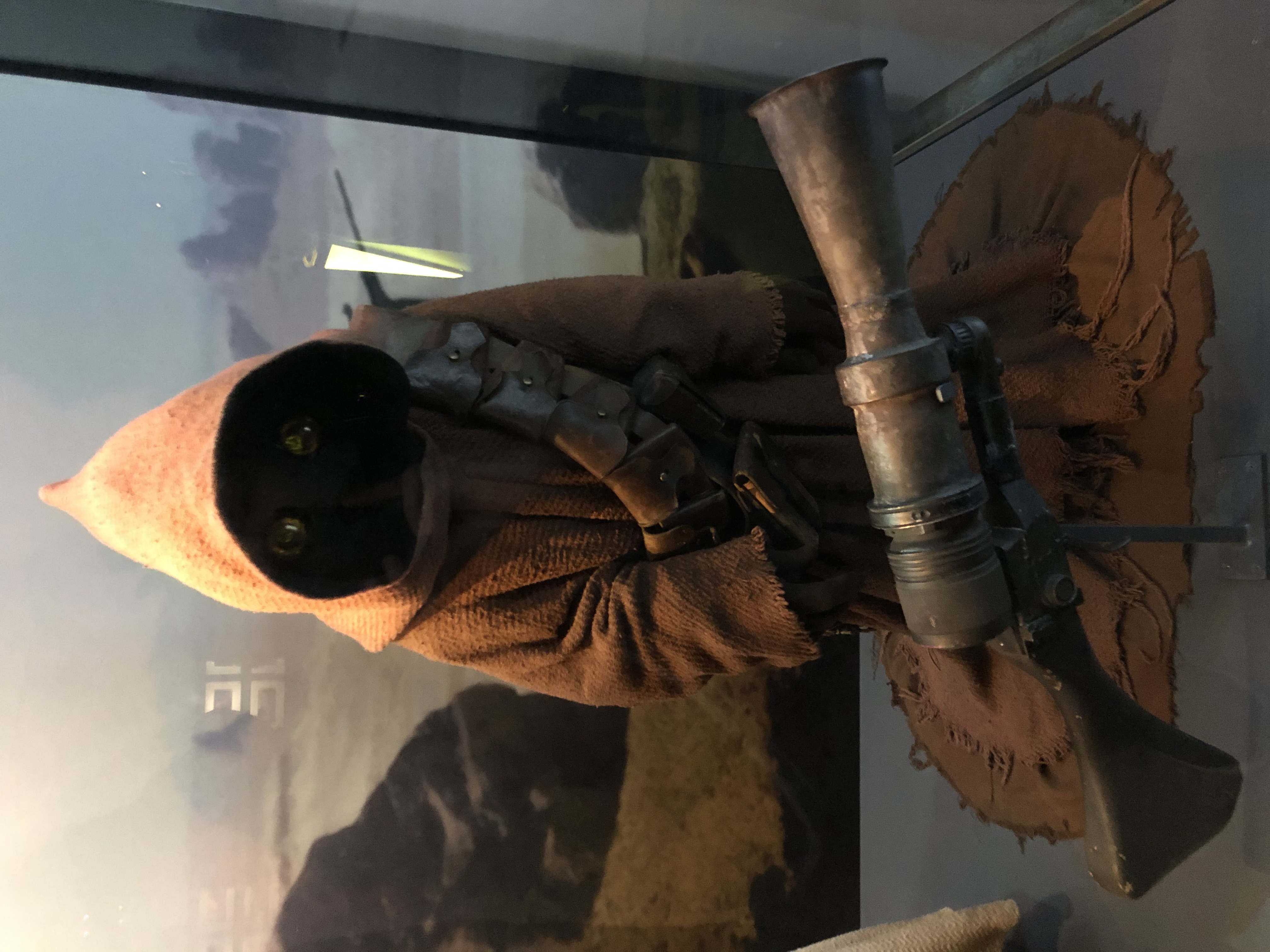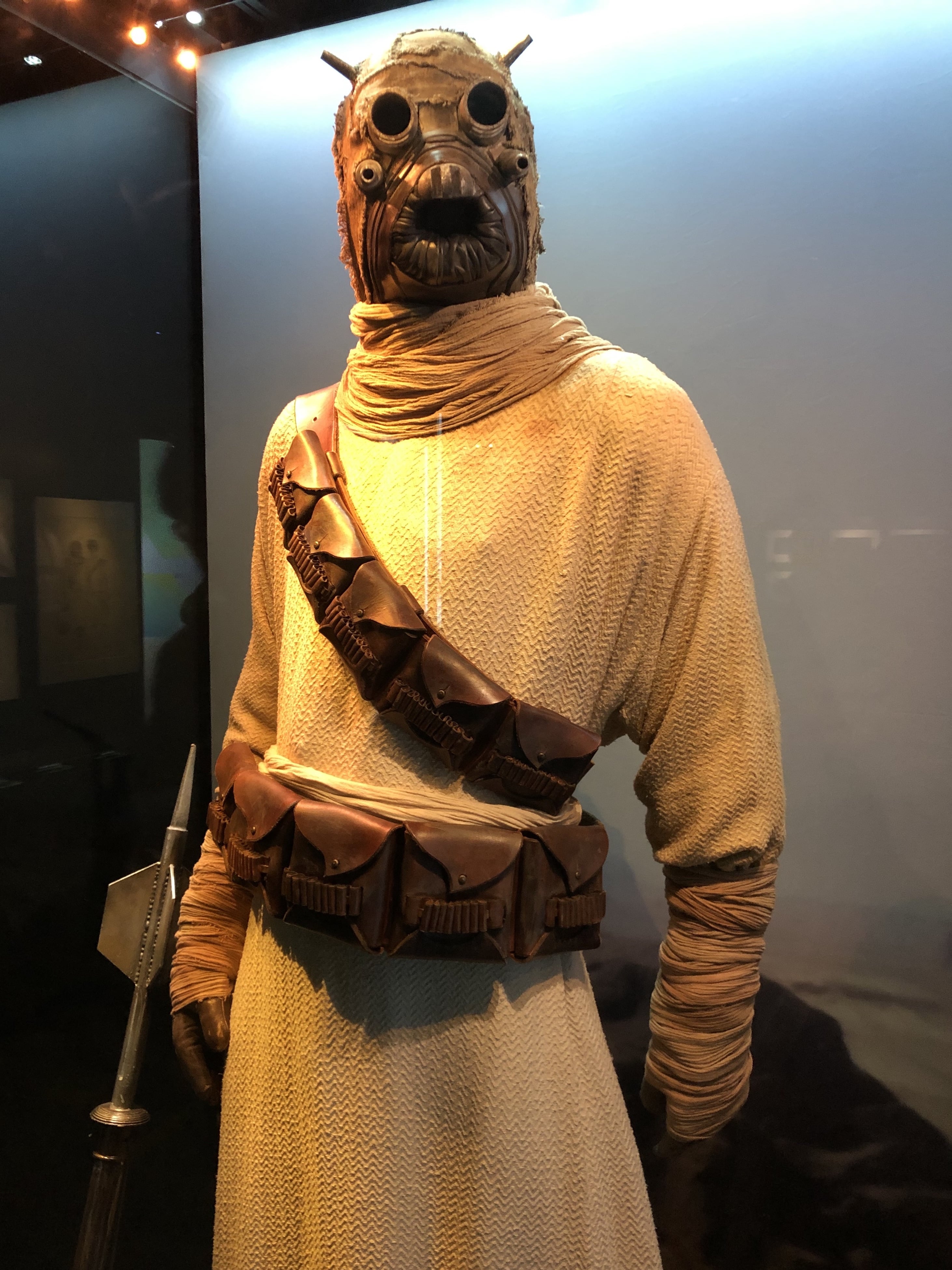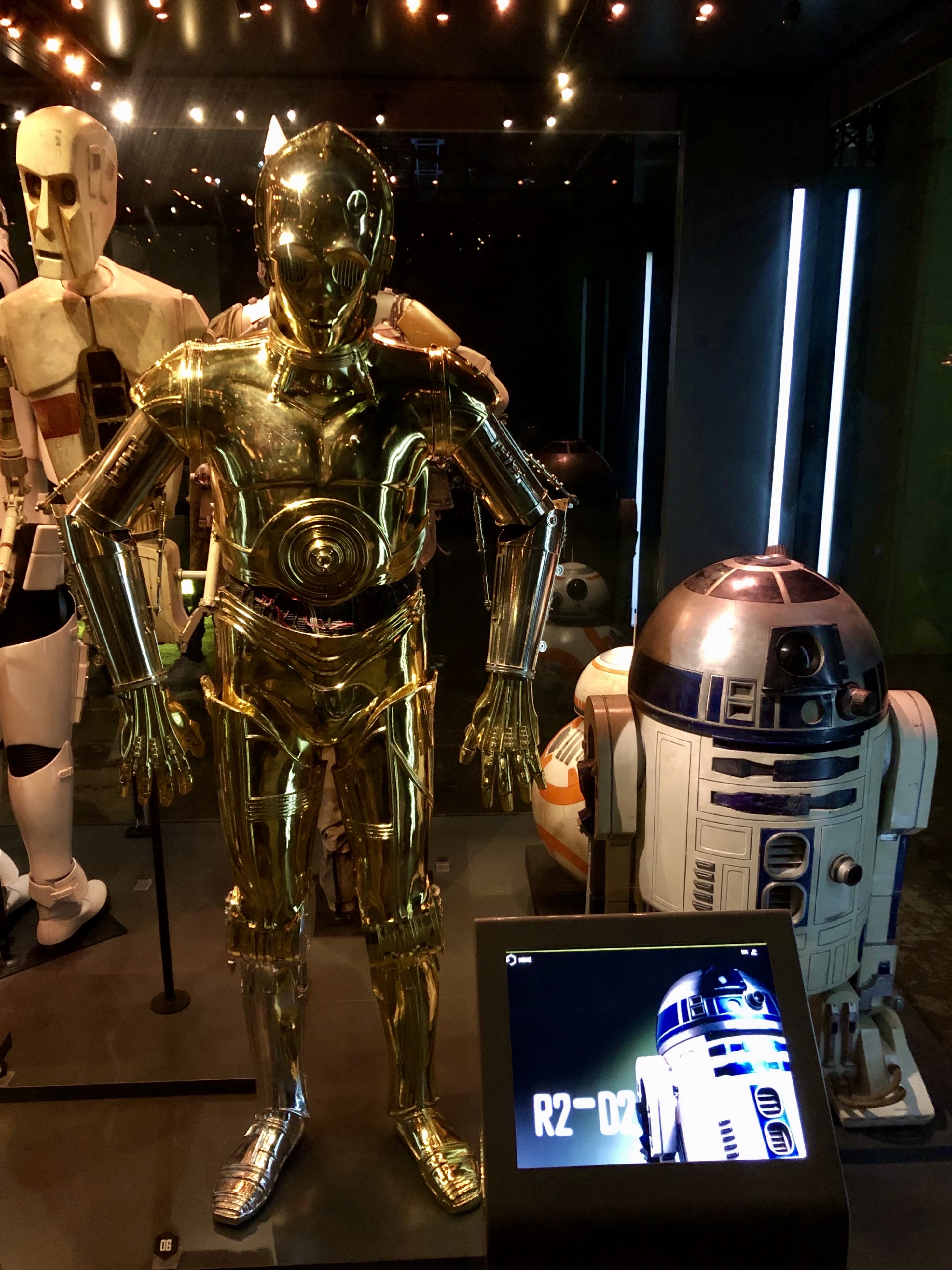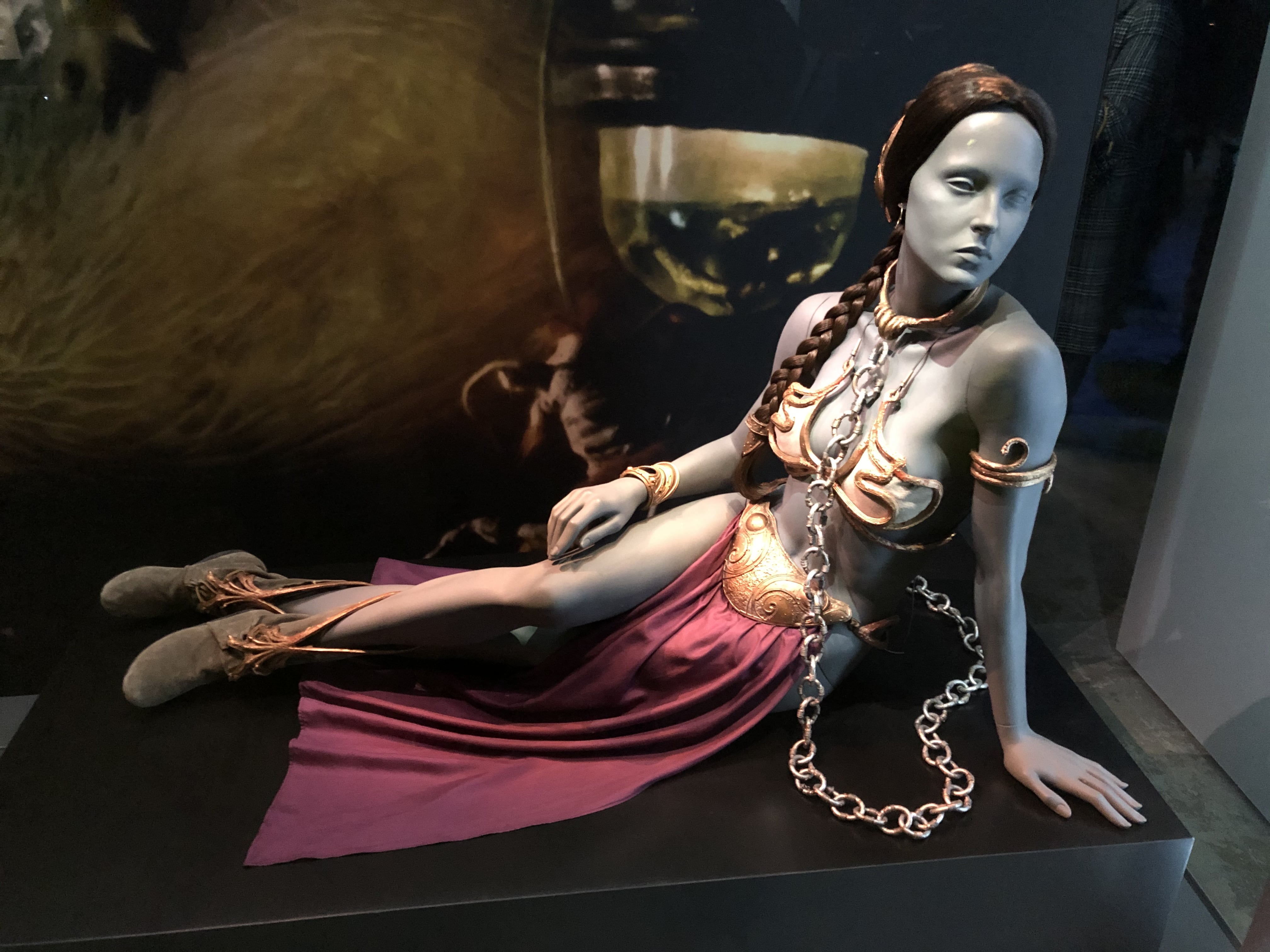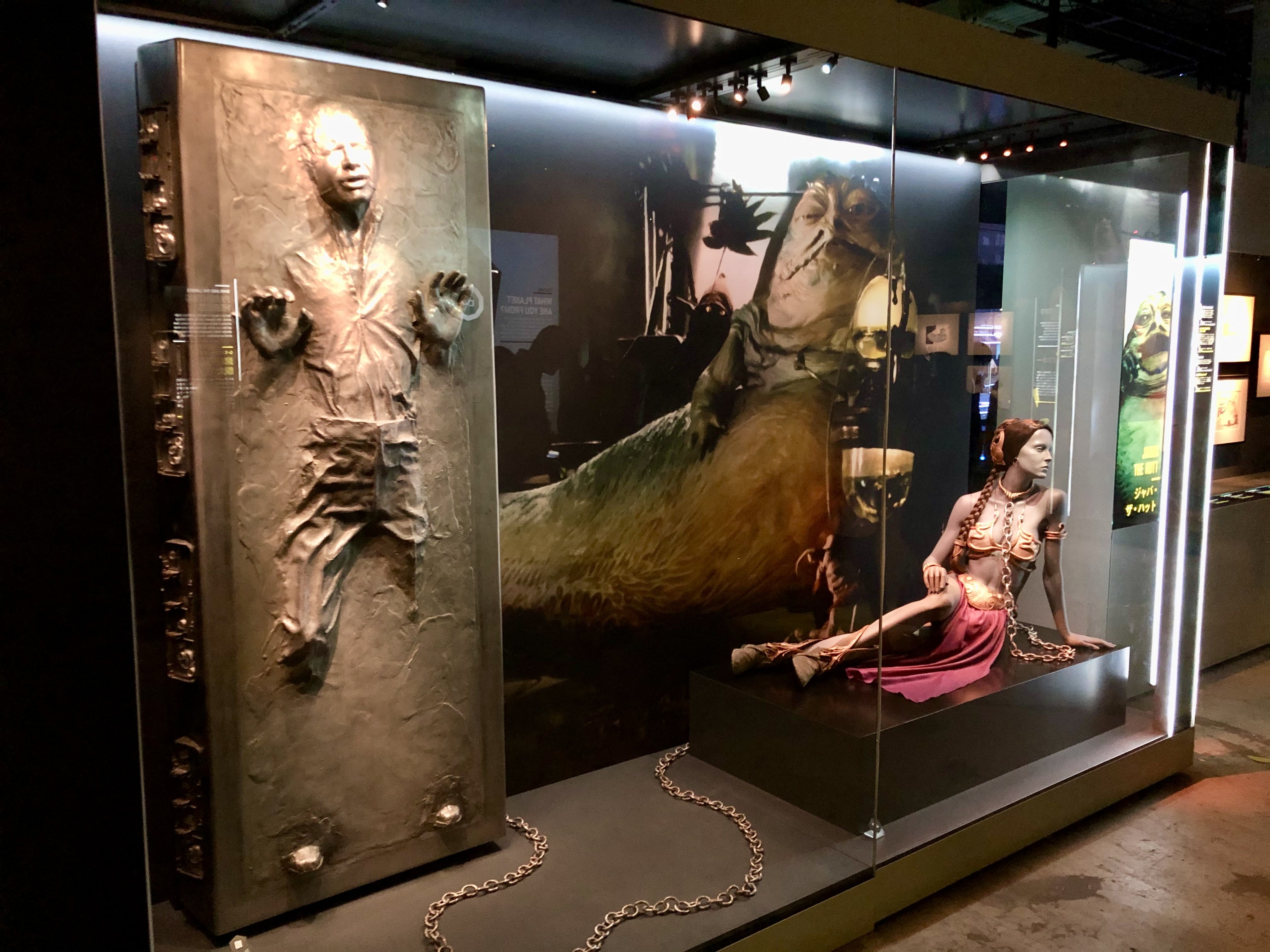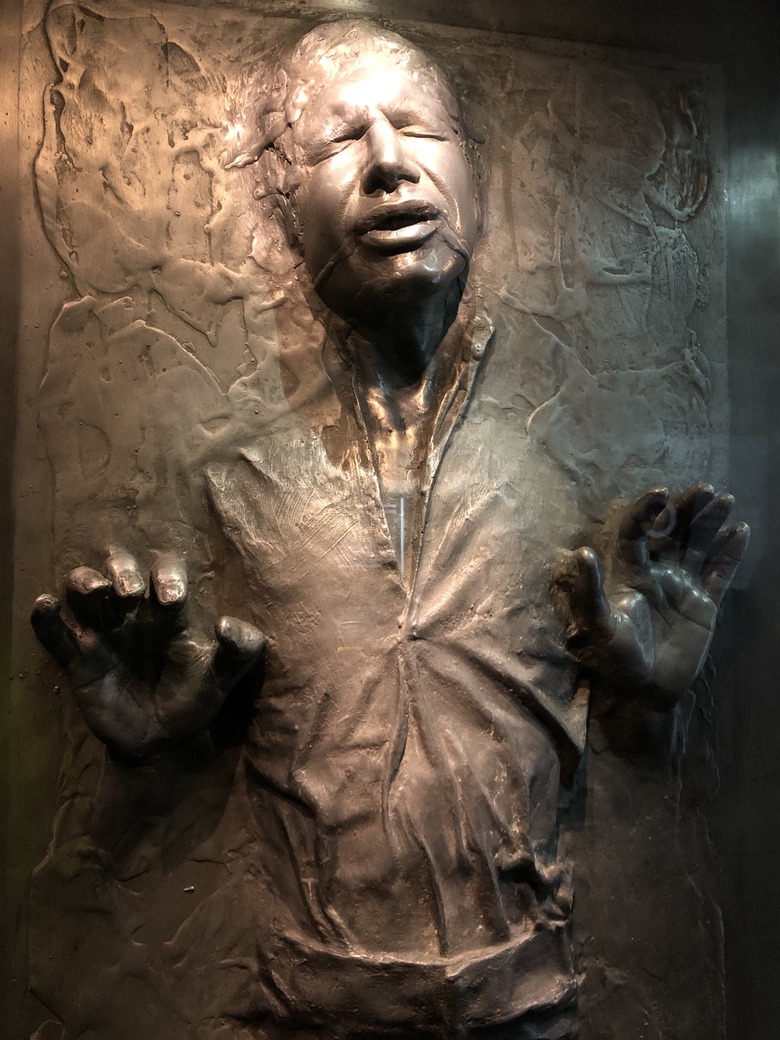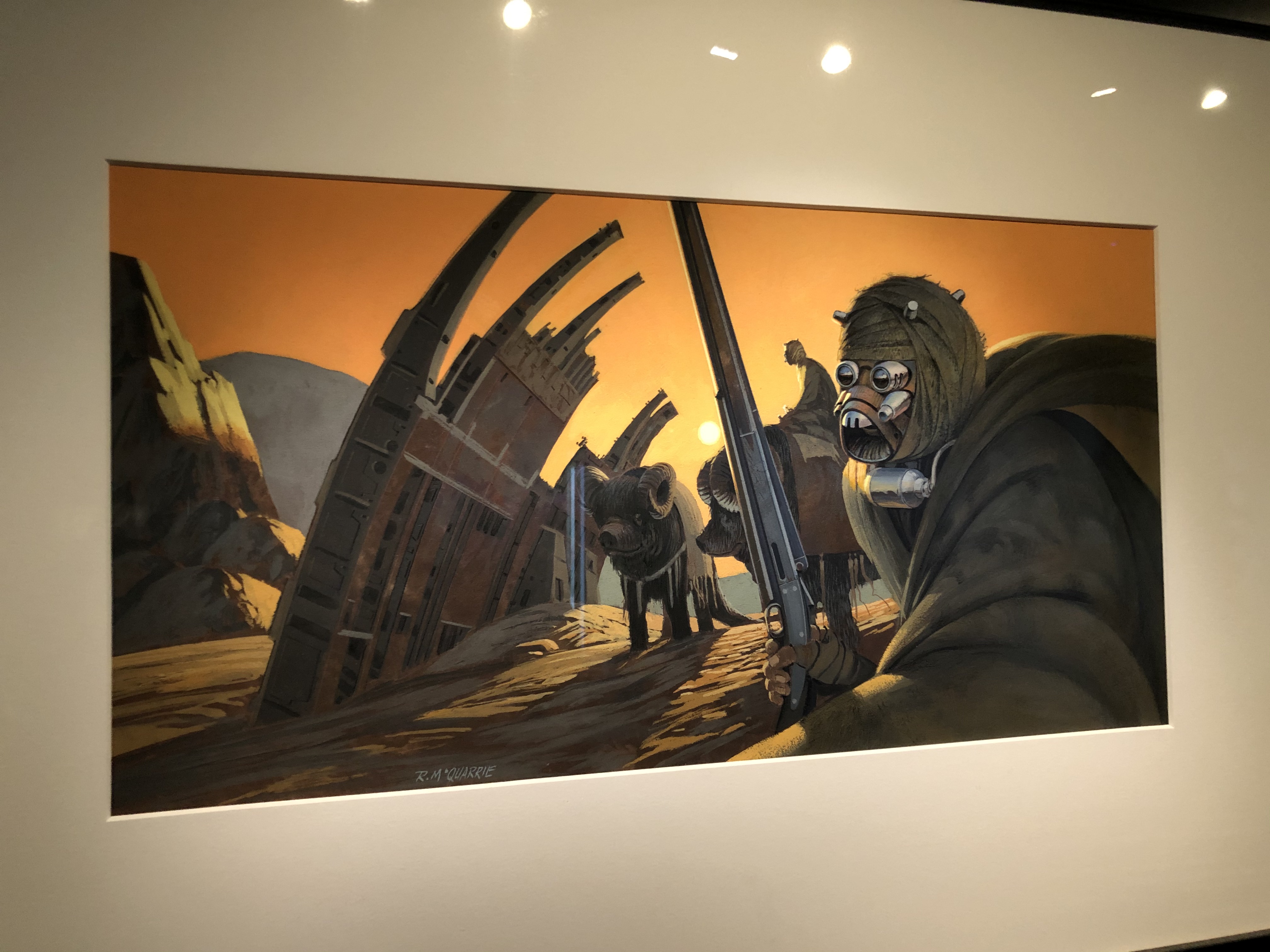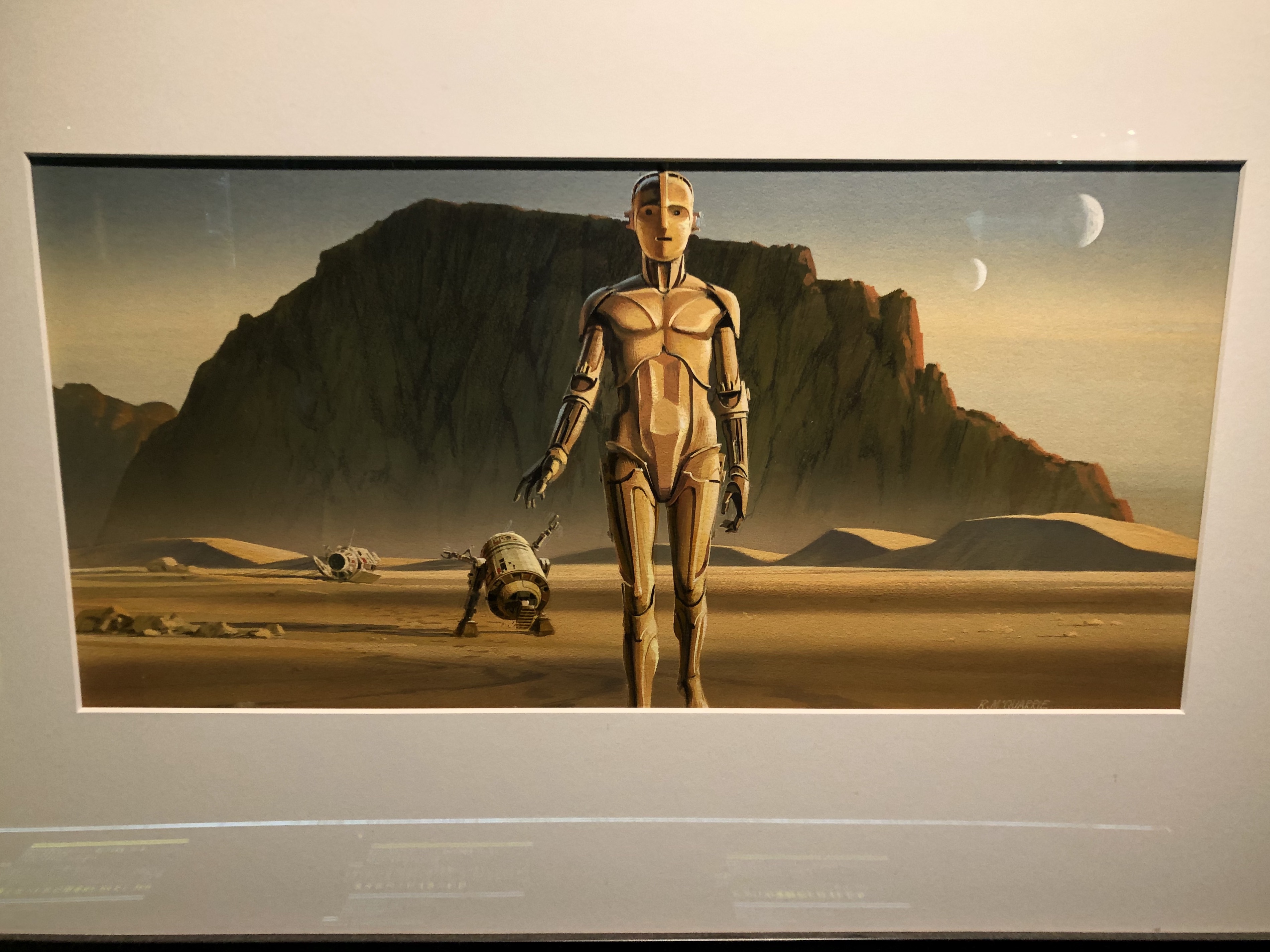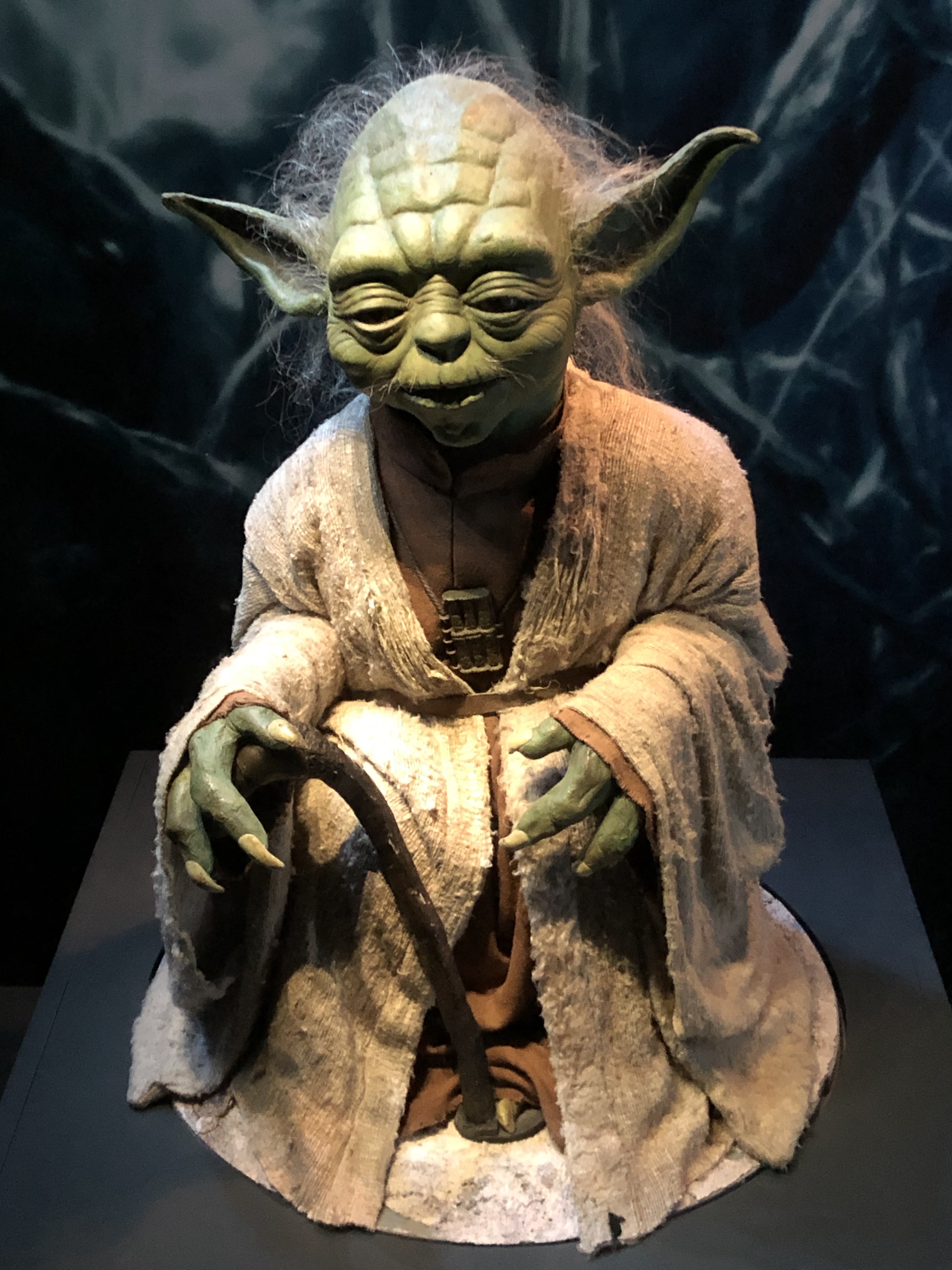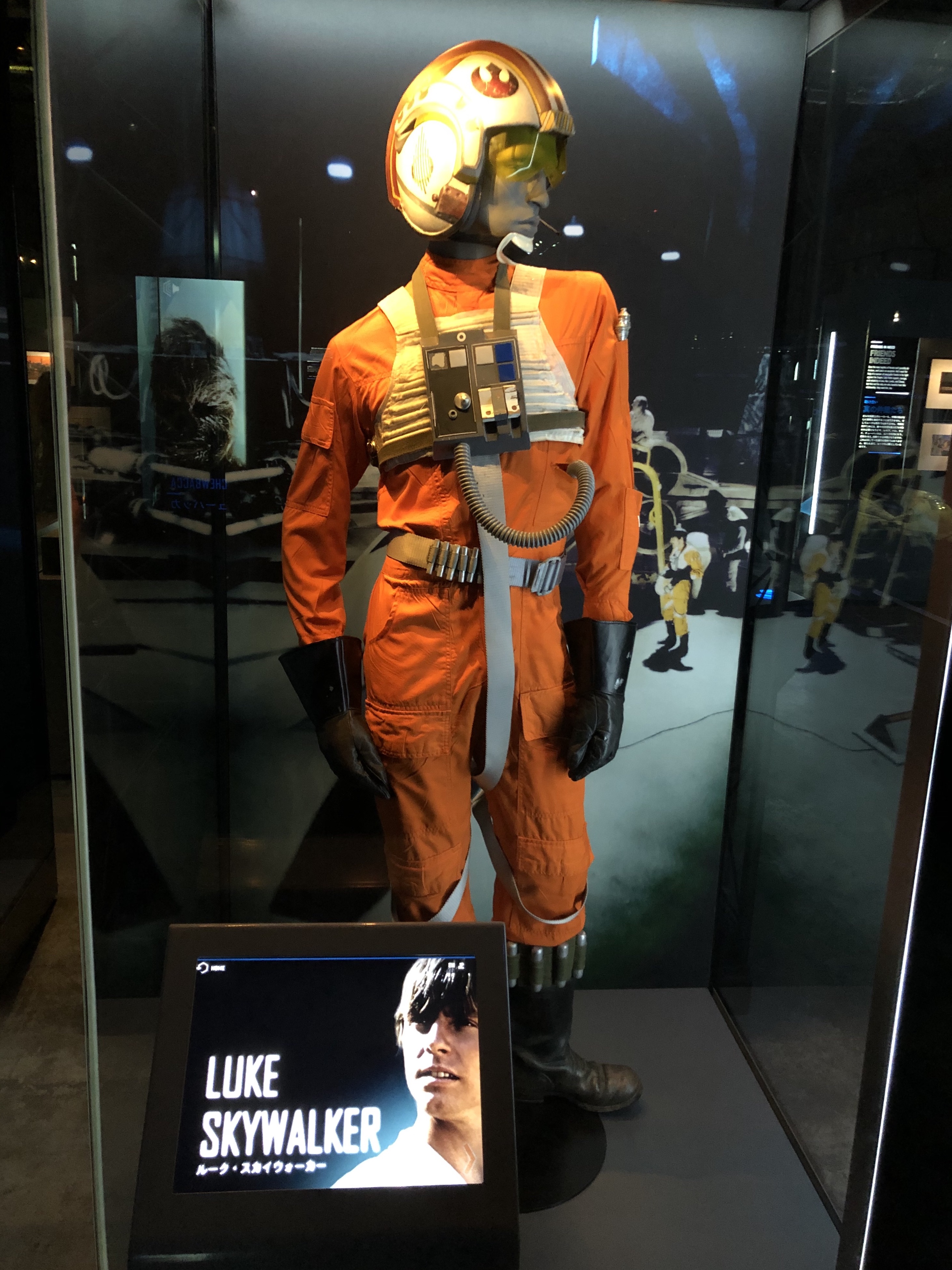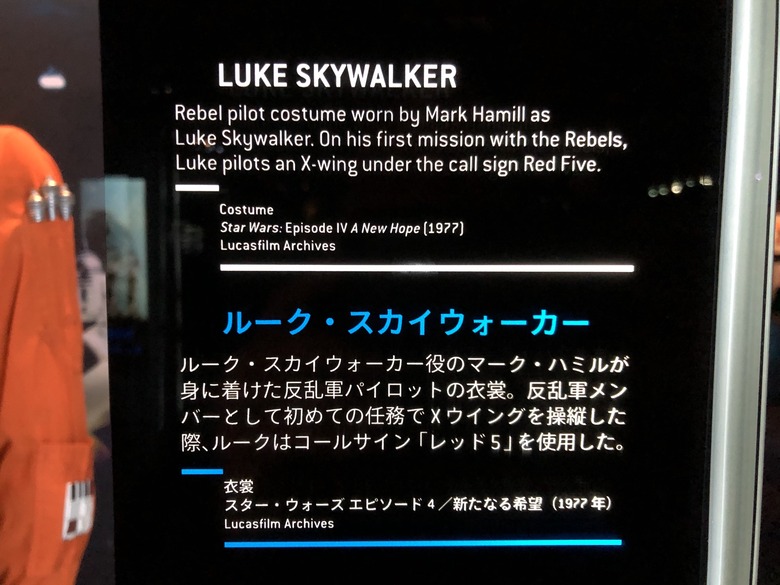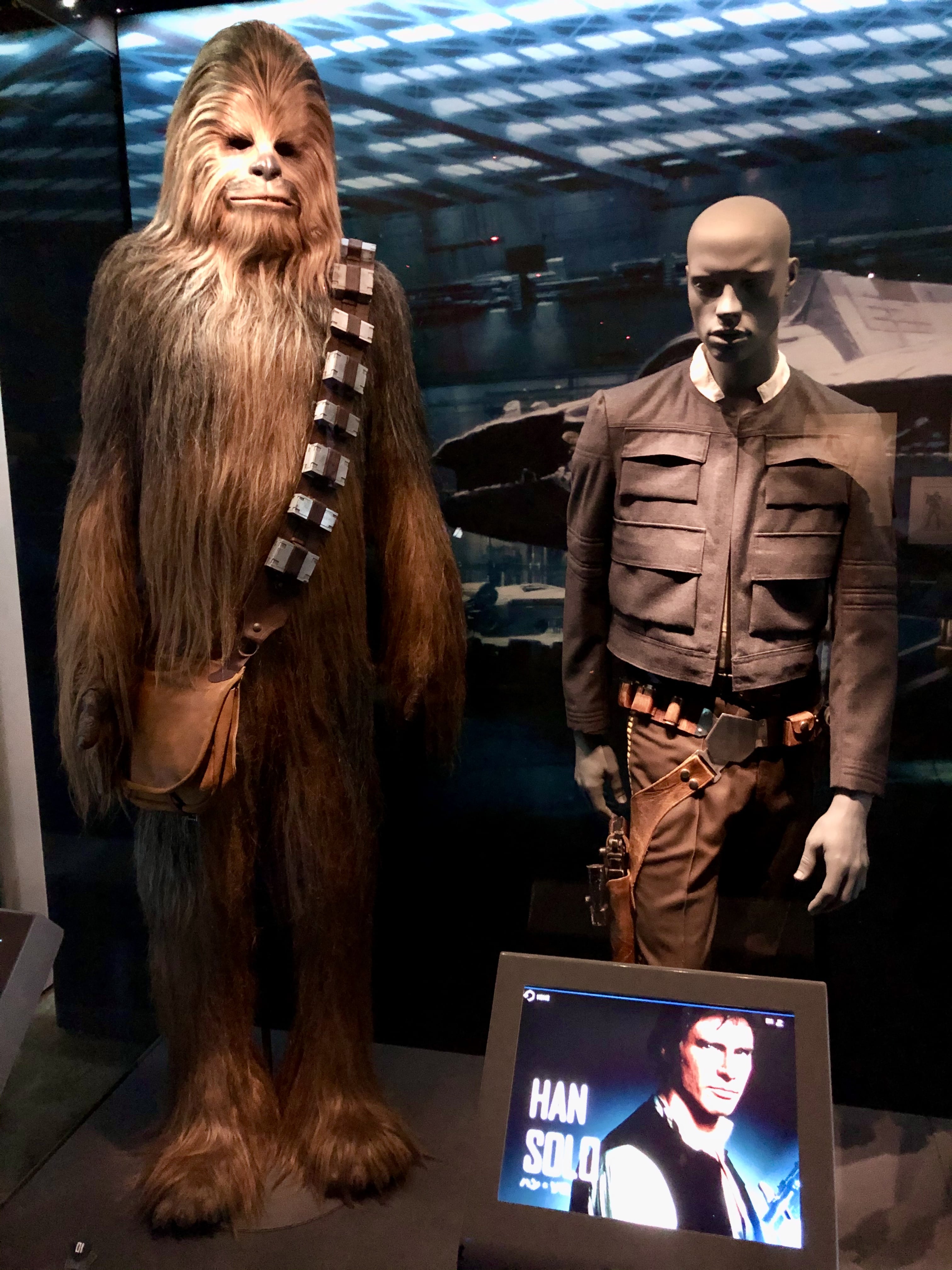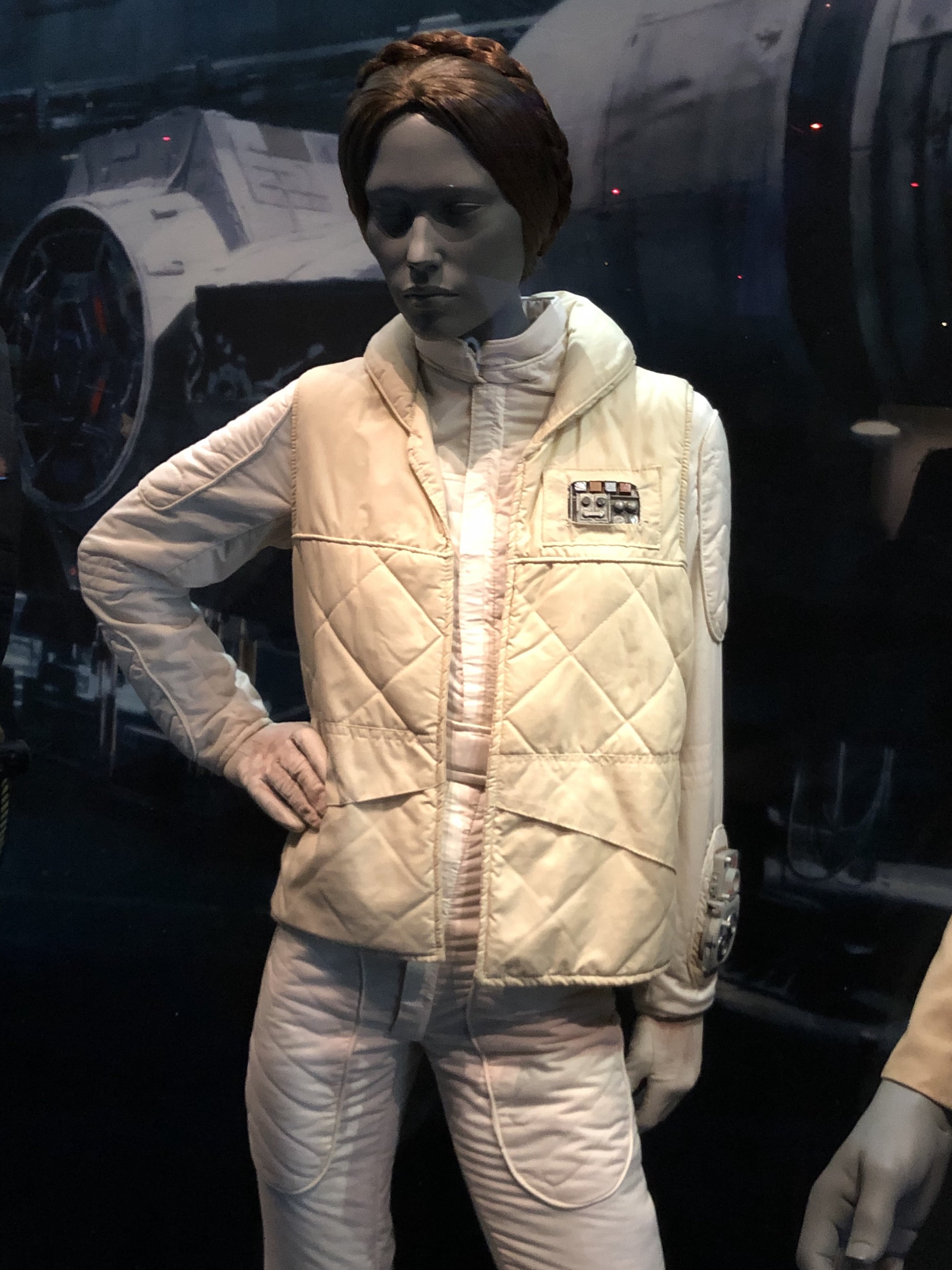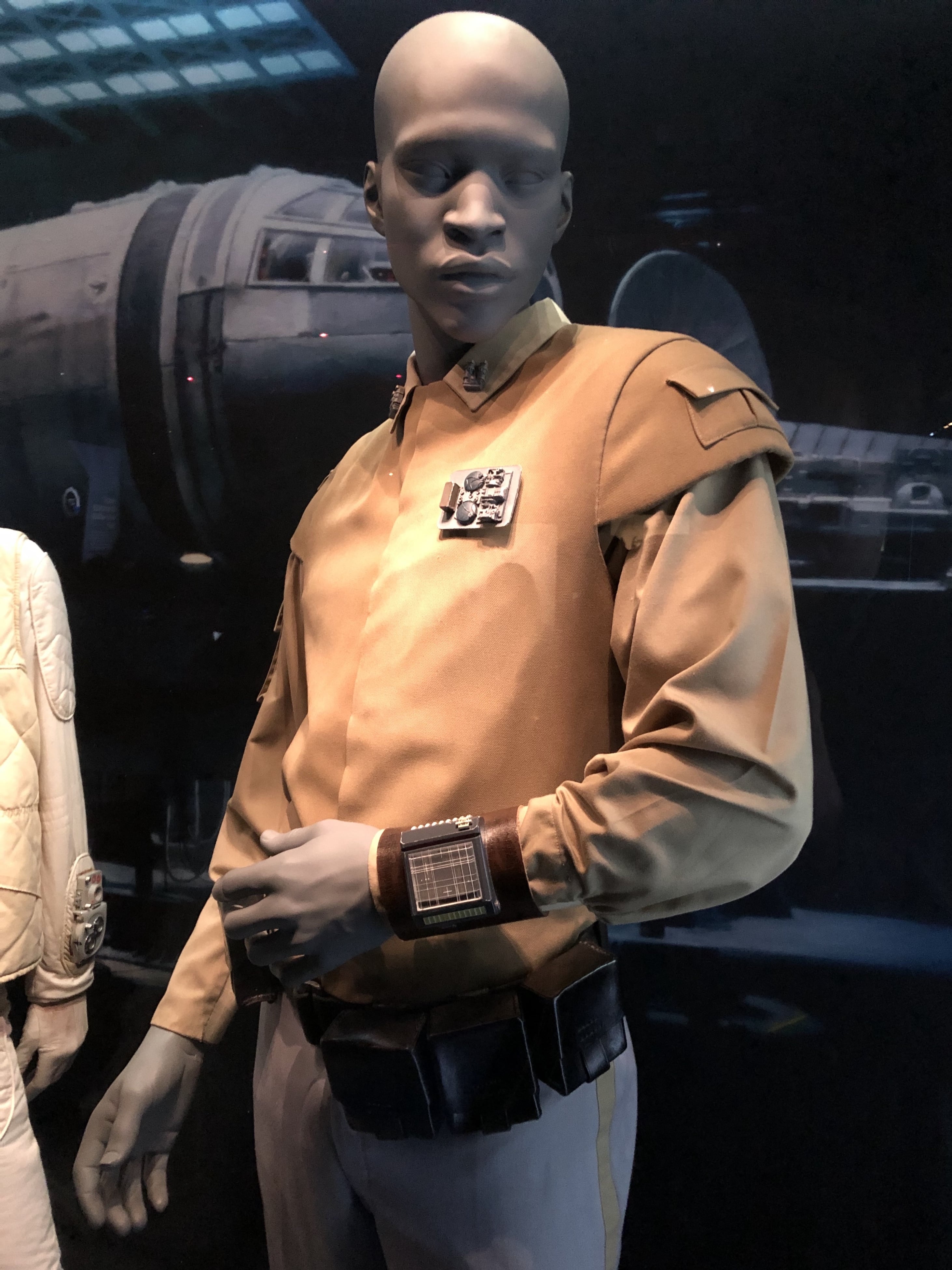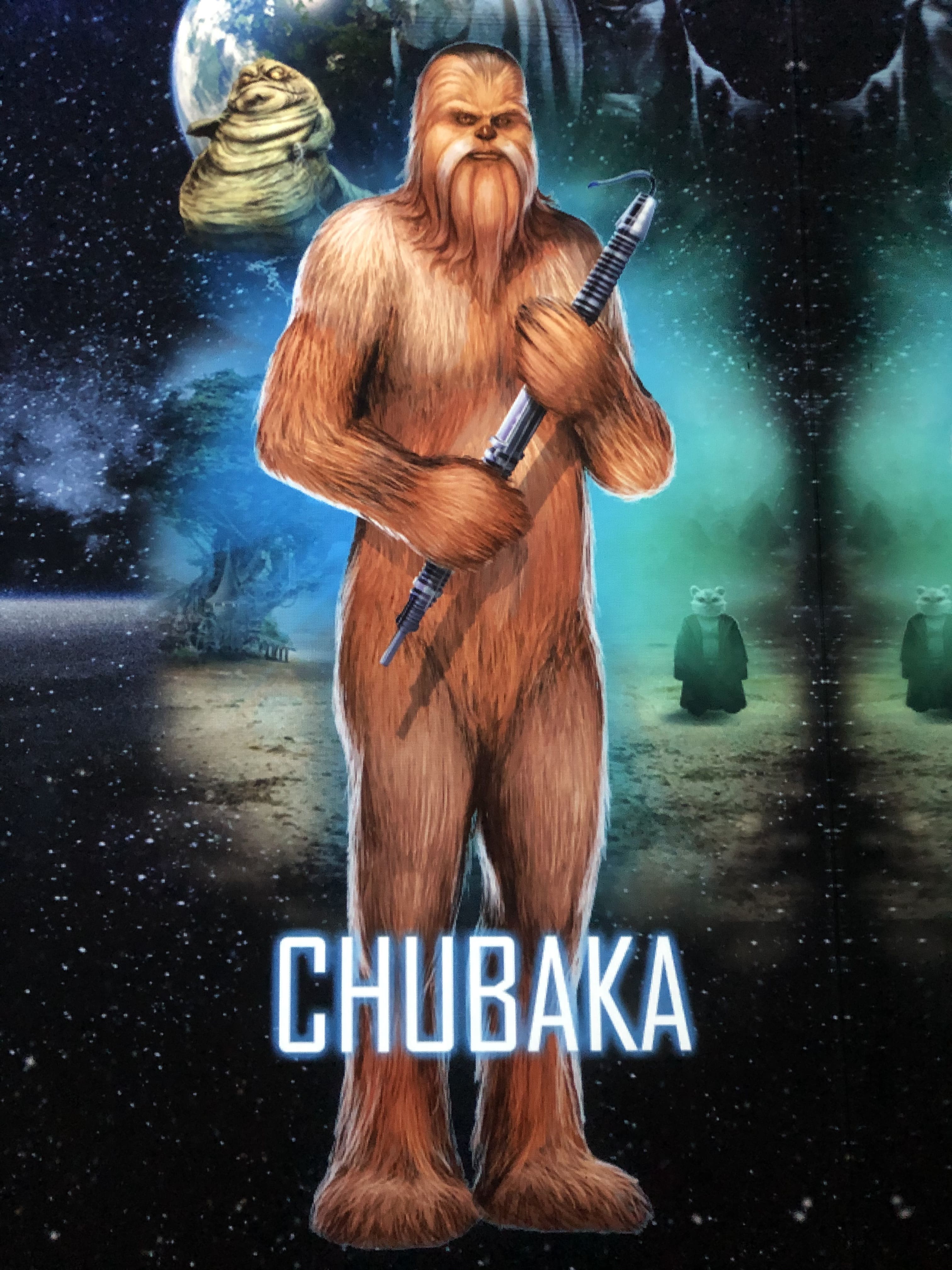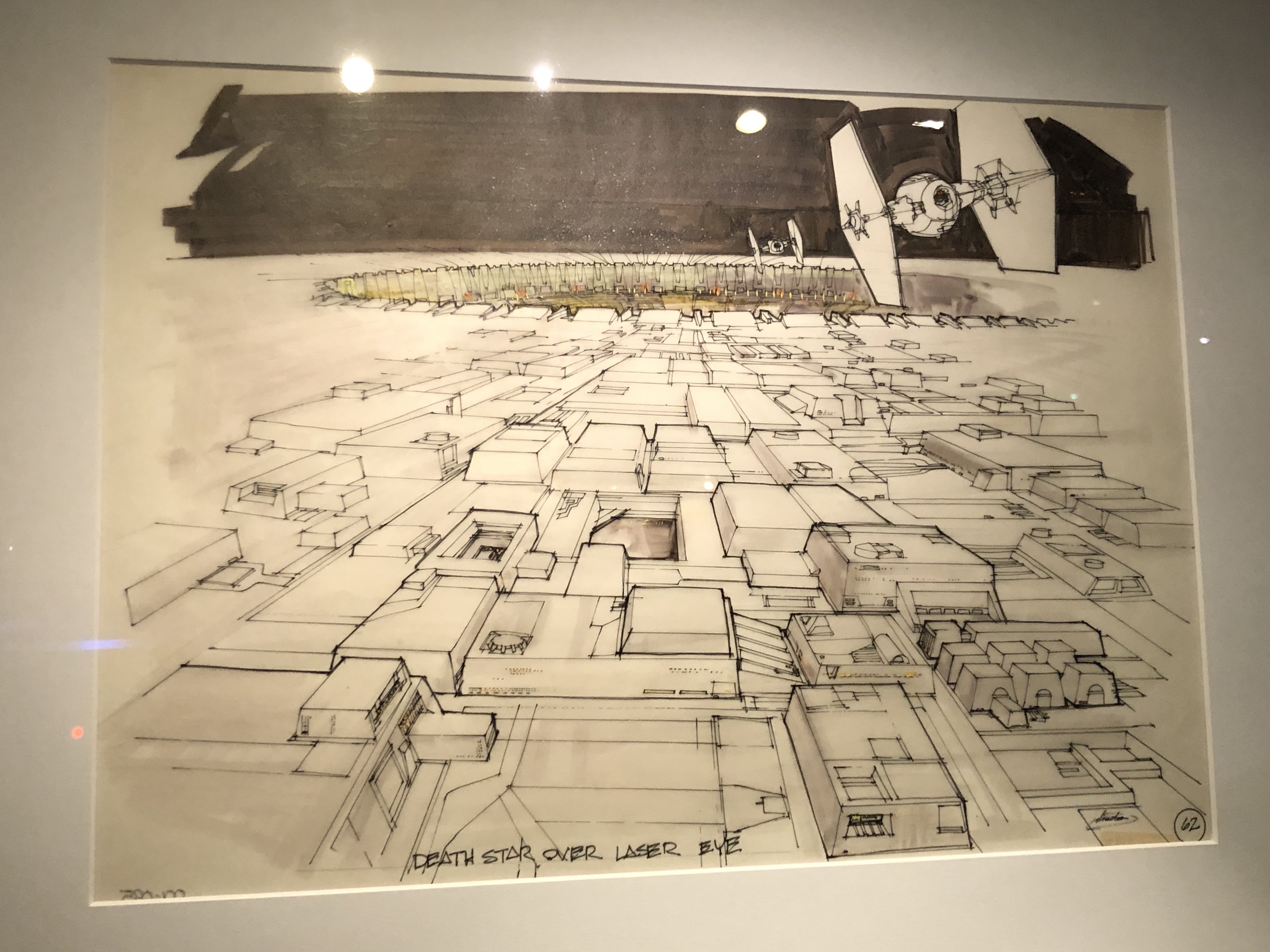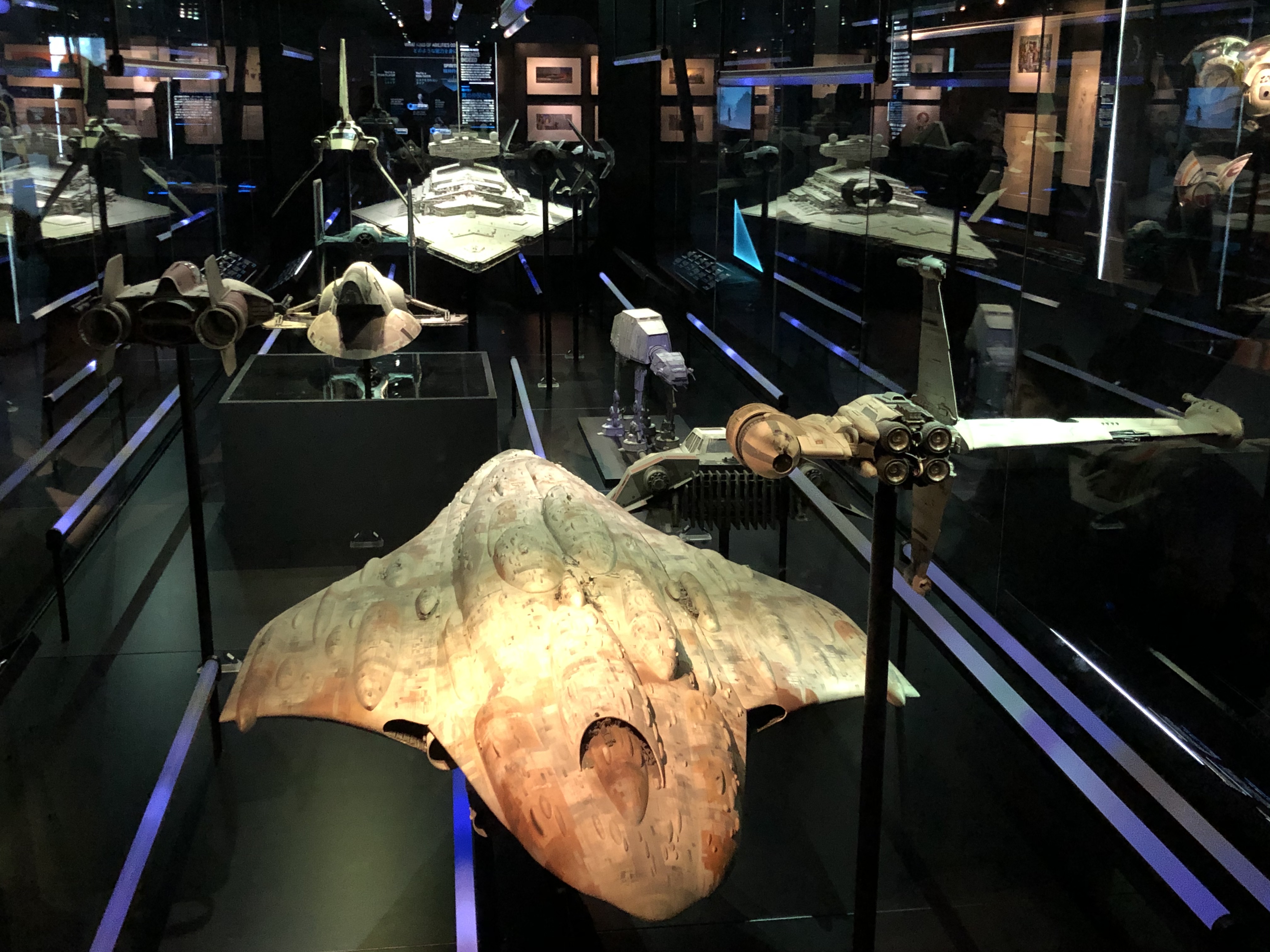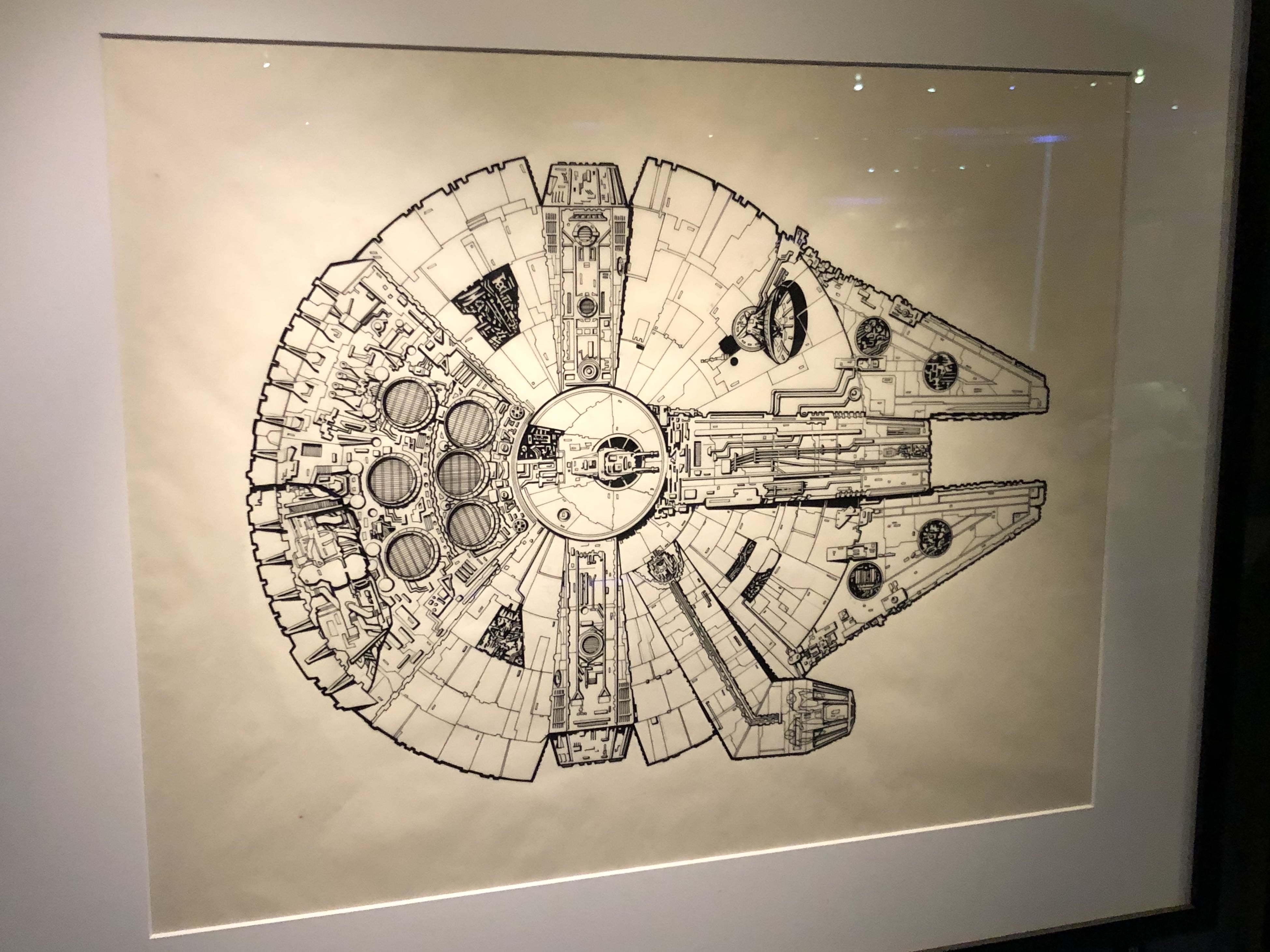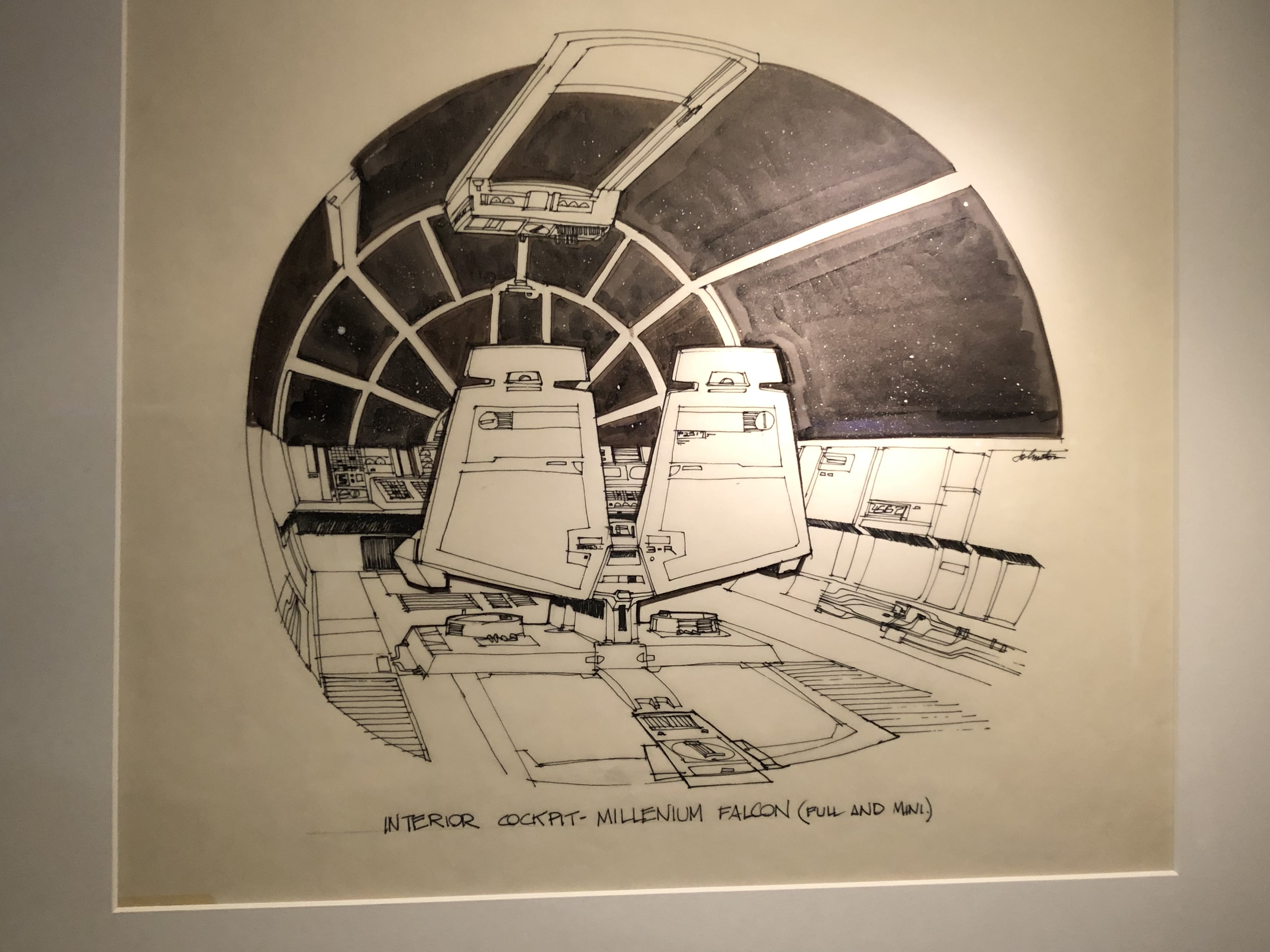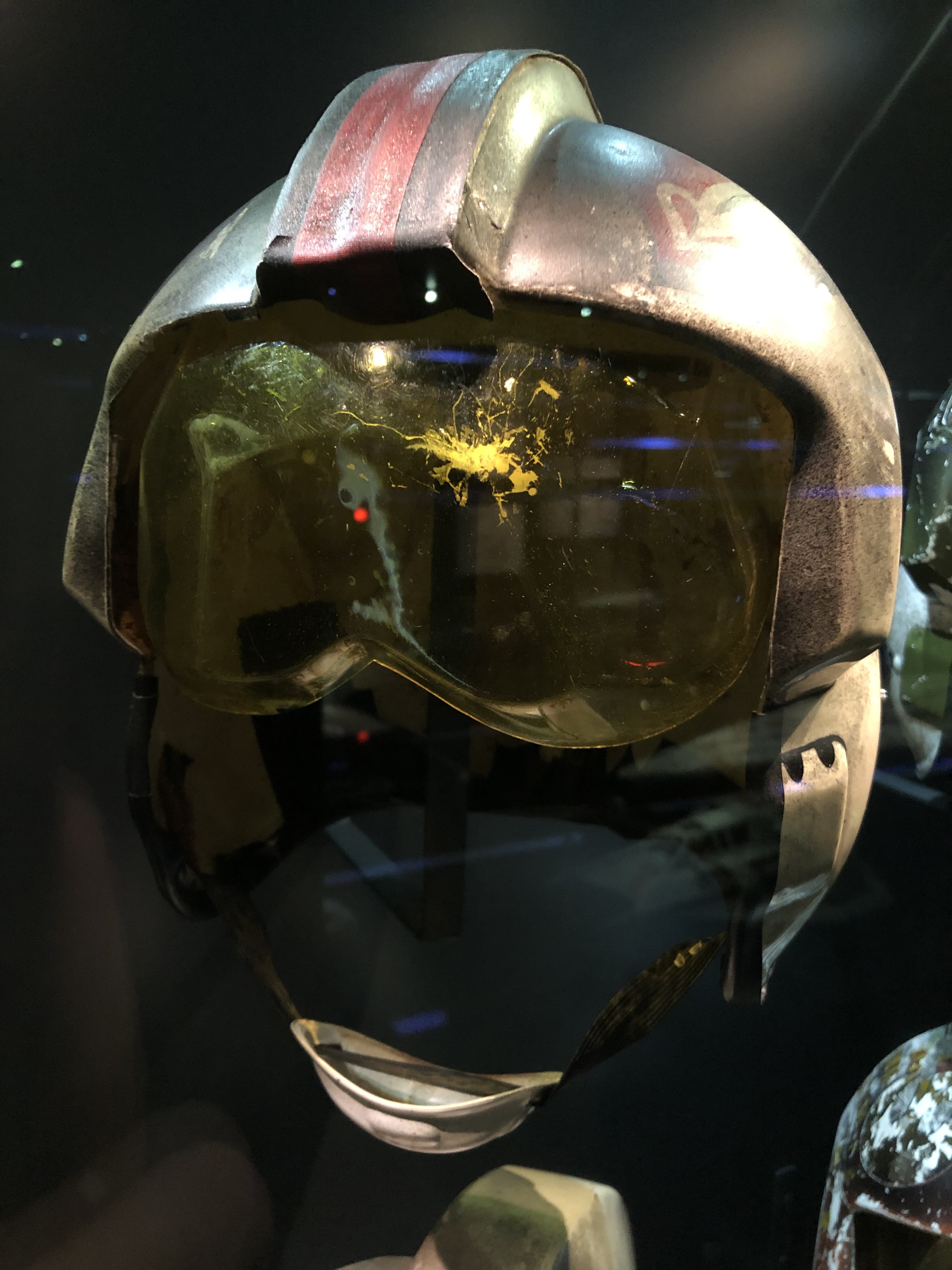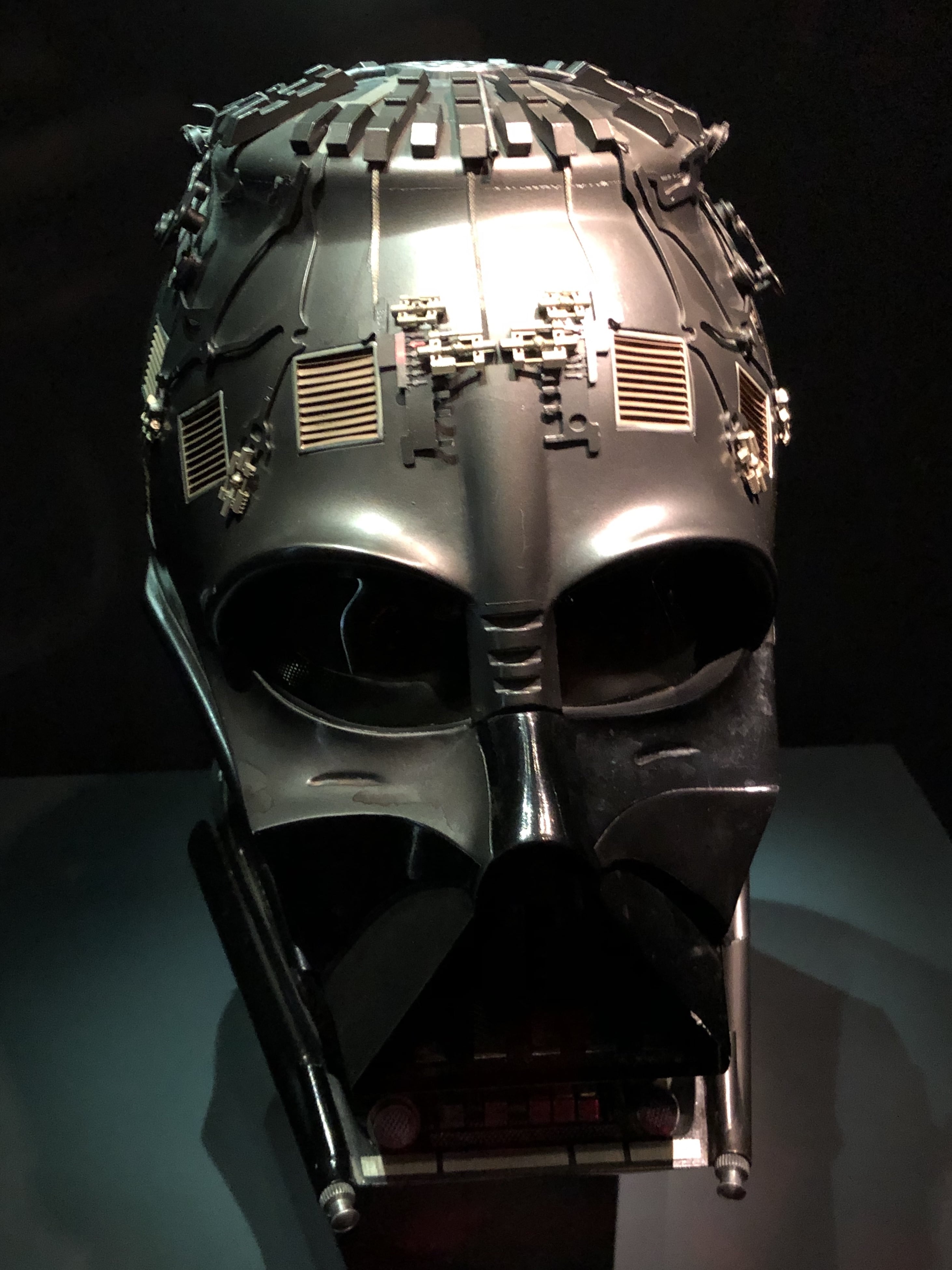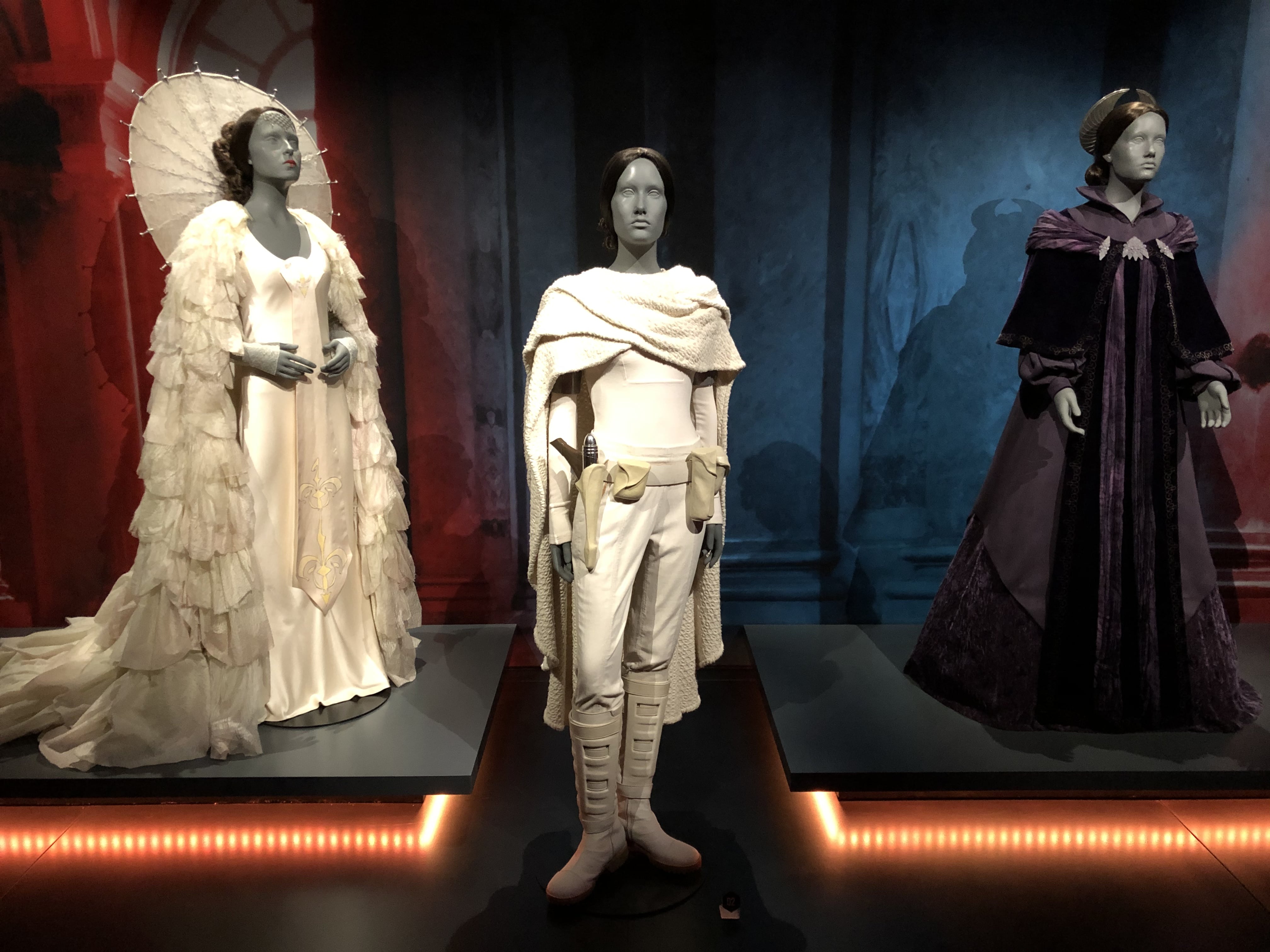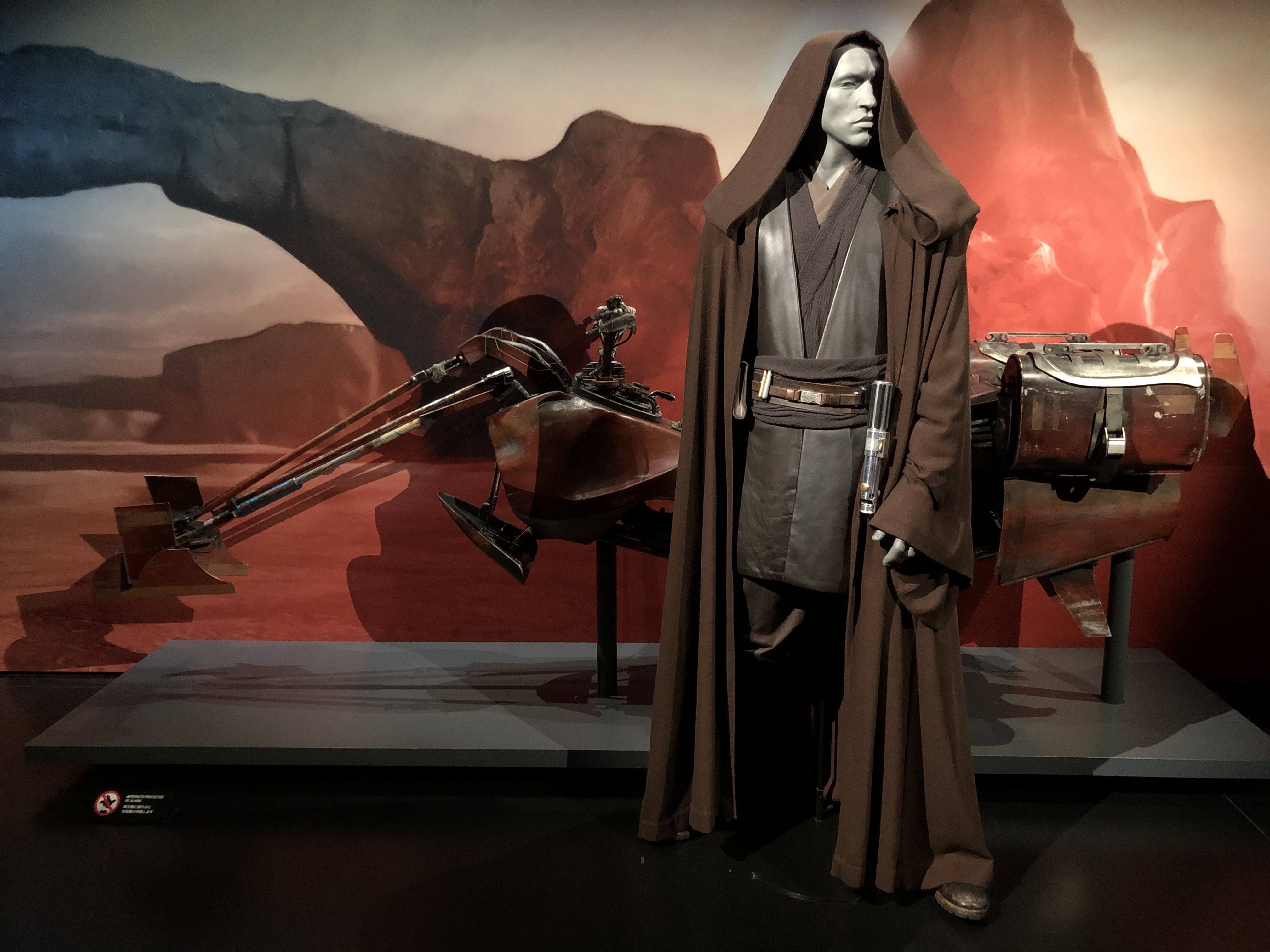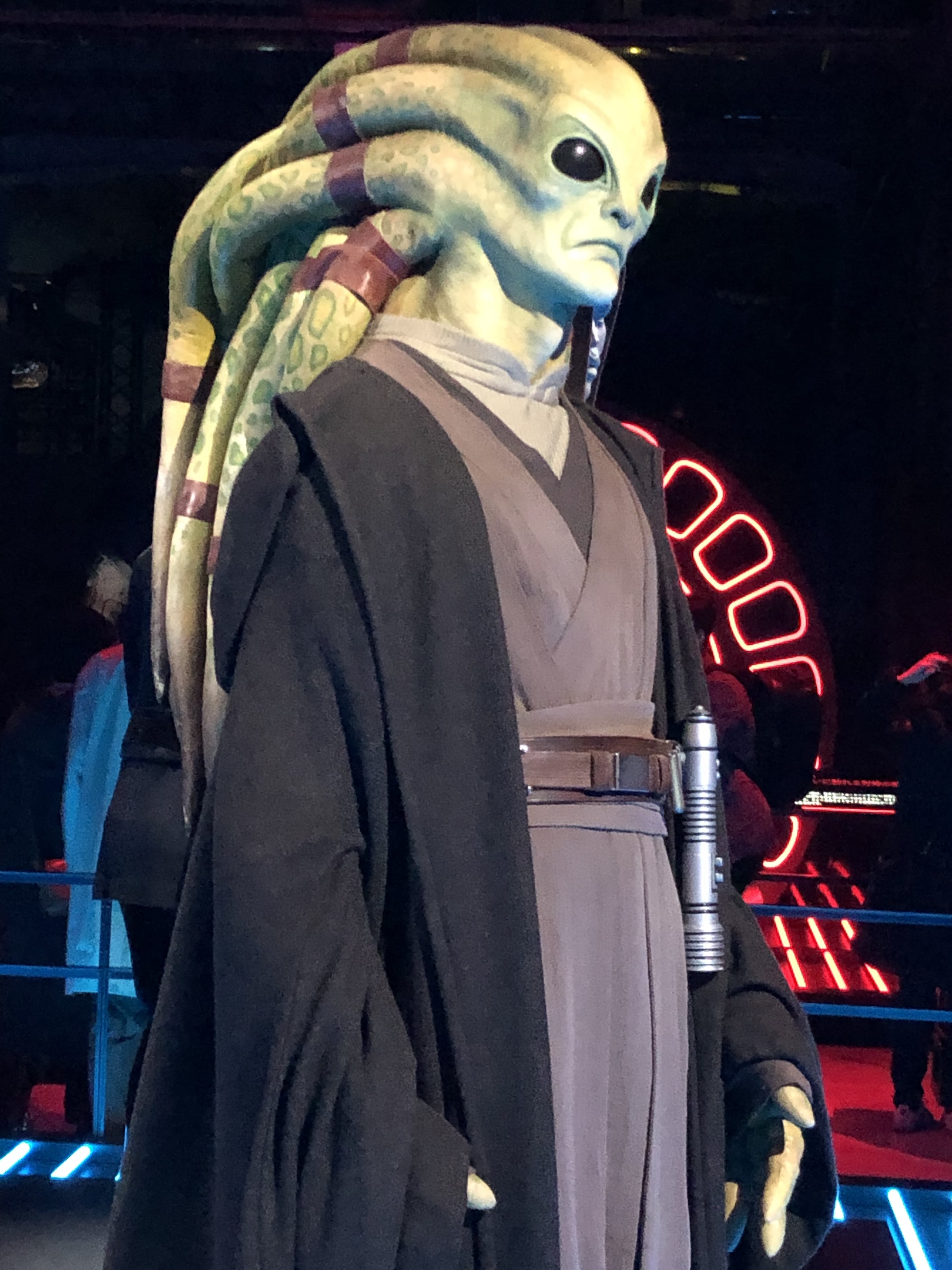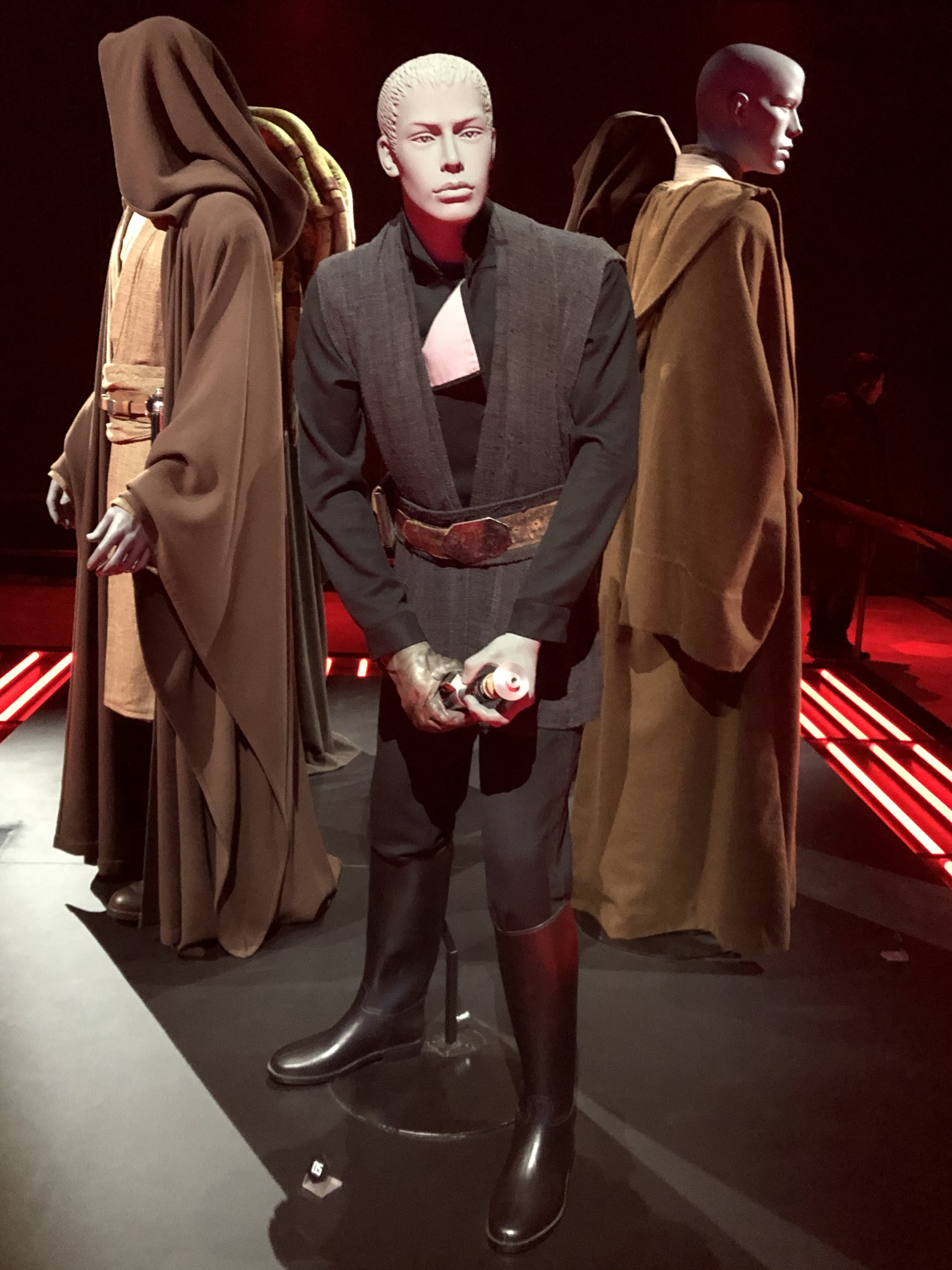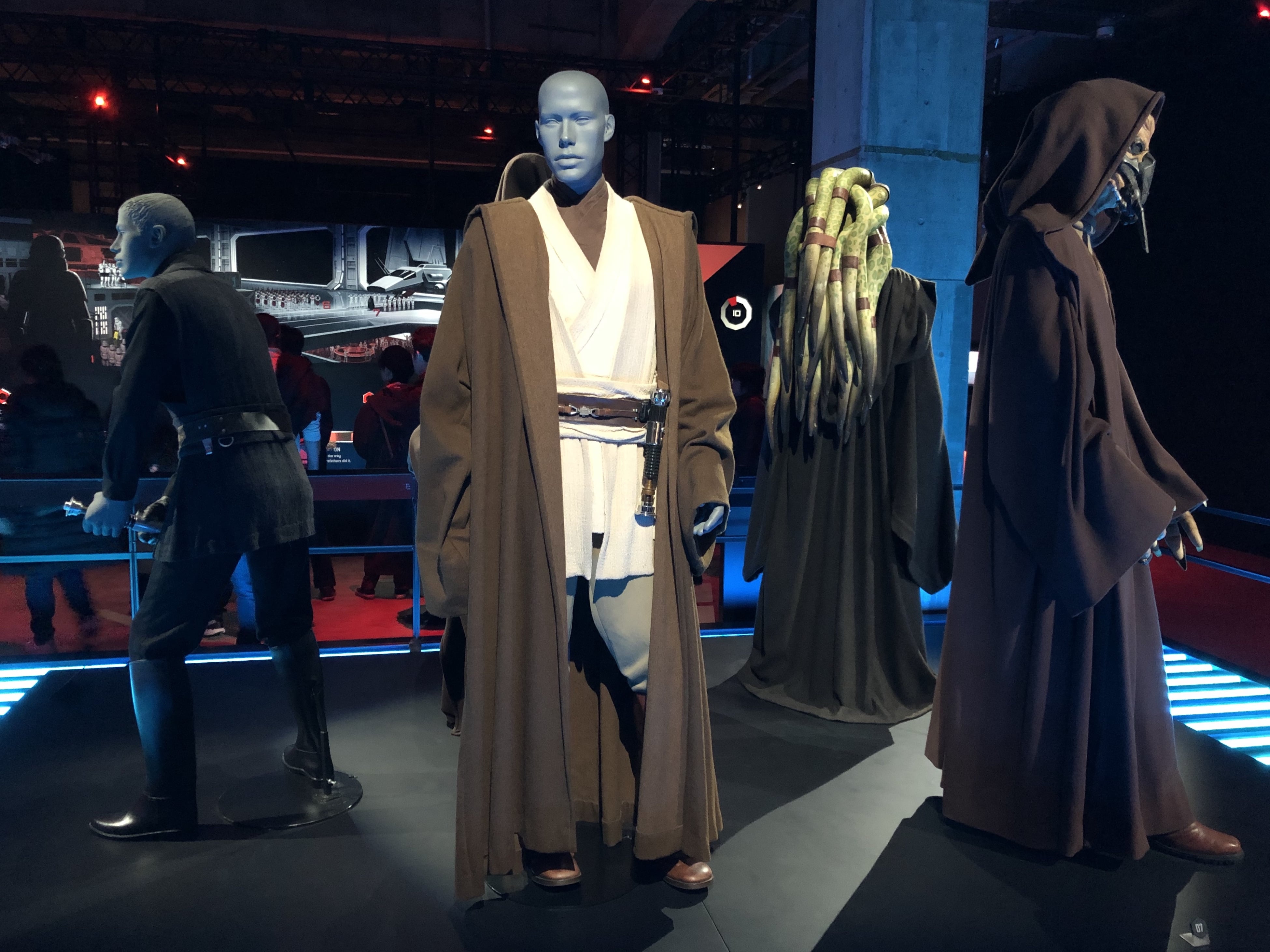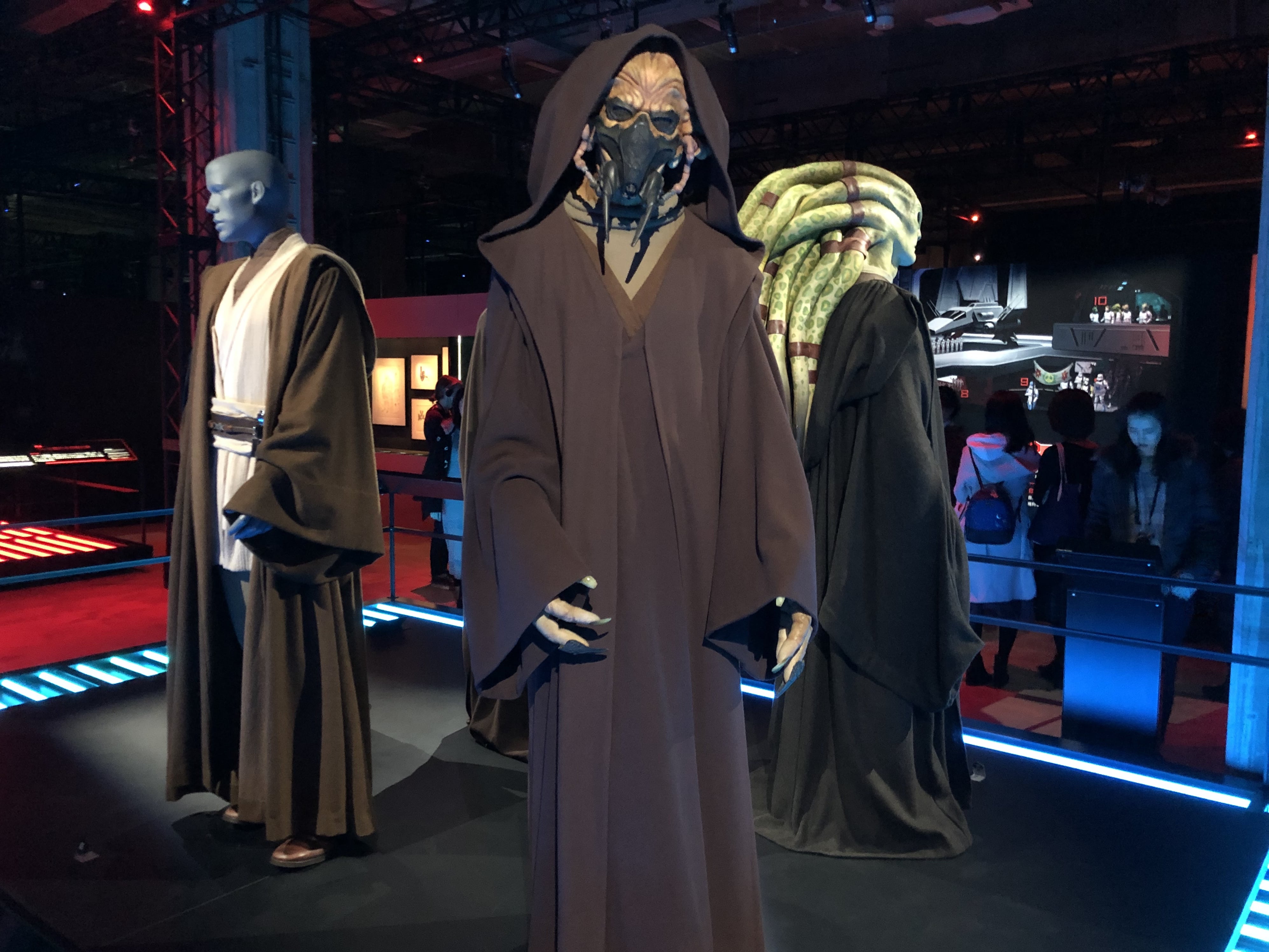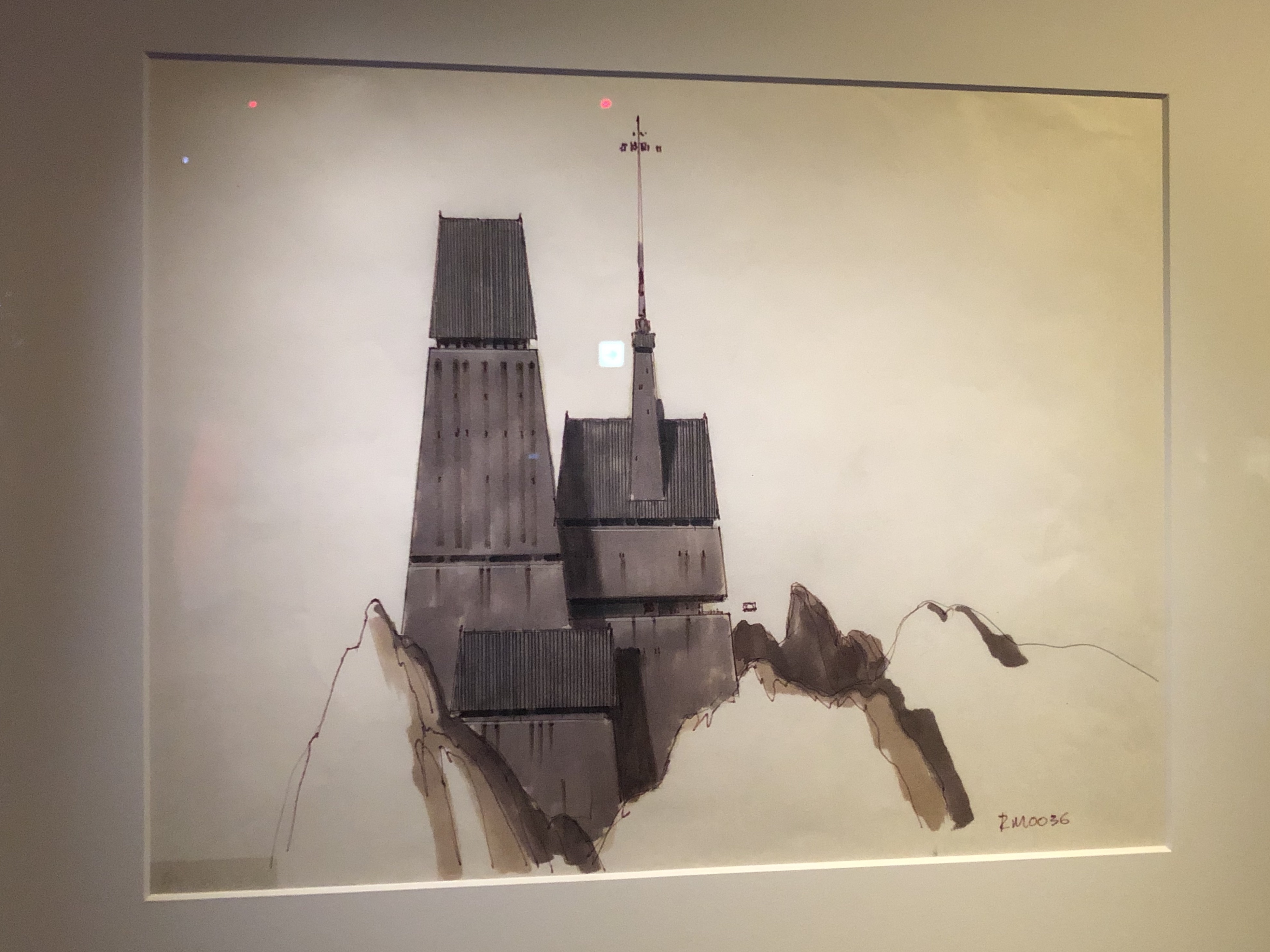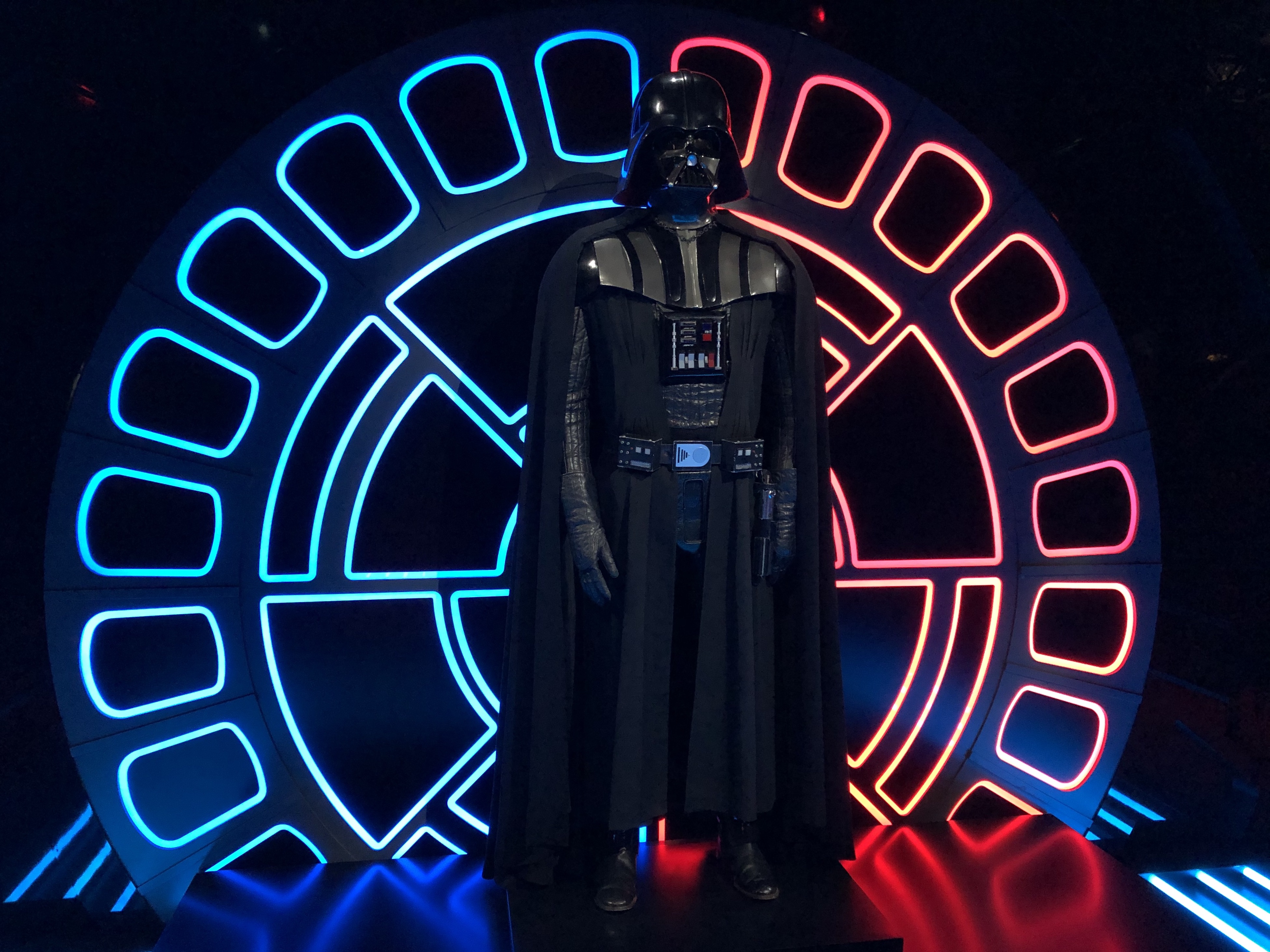'Star Wars' Identities: 10 Things We Learned From Lucasfilm's Treasure Trove Of Original Movie Costumes
Star Wars Identities: The Exhibition has drawn millions of visitors around the globe, touring Canada and cities outside North America like Paris, London, and Sydney. Now, it's finishing its run in Tokyo, where fans have turned out in droves for the last five months to explore a literal warehouse full of props and models, authentic costumes worn by the movie actors (including Mark Hamill, Harrison Ford, the late Carrie Fisher and Peter Mayhew, and many more), and original concept art by the likes of Ralph McQuarrie and Joe Johnston.
In among the geeky goodies and pieces of production history from the Lucasfilm Archives, there were some fascinating nuggets of behind-the-scenes lore, related mostly to the original Star Wars trilogy. Having been on the inside of this movie-artifact goldmine — the ultimate Star Wars museum experience — we've come away with 40 photos for you, along with ten of the most interesting tidbits of lesser-known information. Even for diehard fans, there might be some neat trivia factoids to be learned from this ... and hey, it doesn't get much cooler than seeing the legit Han Solo in carbonite prop. After the mixed flavors of The Rise of Skywalker and The Mandalorian, who's ready for an old-school Star Wars palate cleanser?
1. Boba Fett Was Originally an Elite Stormtrooper
The costume that actor Jeremy Bulloch wore as Boba Fett still cuts a fine figure in a glass display case, but its final form onscreen was more colorful than planned. Everyone's favorite pre-Disney+ Mandalorian bounty hunter was first envisioned as an elite Stormtrooper with all-white armor. It was only after screen tests that the look of Boba Fett was changed and his costume painted over with the color scheme we now know.
The seeds of the silvery Captain Phasma — the elite First Order Stormtrooper commander — can perhaps be traced back to the original idea for this all-white Stormtrooper Boba Fett. No wonder these two characters fill the same role within their respective trilogies (namely, to sport a cool design that stands out among Stormtroopers without speaking much actual dialogue).
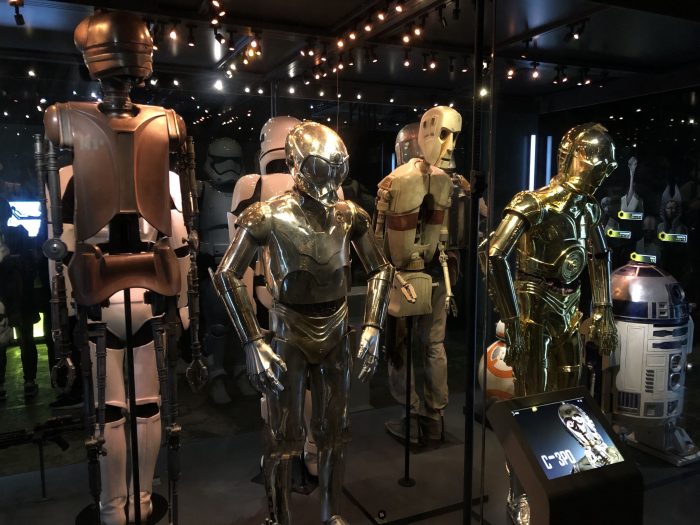
2. Droids Truly Have Outlived the Cantina Aliens
The first season of The Mandalorian recently revisited the Mos Eisley cantina and showed how most of the alien barflies there had cleared out in favor of droids. It seems life imitates art ...
In Star Wars: A New Hope, the cantankerous walrus man, Ponda Baba, famously lost an arm when he picked a bar fight with the wrong Jedi. (I've always thought it would be funny if Robot Chicken was right and he was just aggressively outgoing, but then his pig-nosed cohort, Dr. Cornelius Evazan, totally mistranslated what he was saying to Luke Skywalker). These days, Ponda Baba's head — the mask worn by actor Tommy Ilsey — is one of the only remaining artifacts from the cantina scene.
Droids and other residents of Tattoine outside the cantina, like the Tusken Raiders and Jawas (along with their gaffi sticks and ion blasters), have fared much better in the Lucasfilm Archives. Anthony Daniels and Kenny Baker's classic C-3PO and R2-D2 costumes have naturally been preserved, as have the original puppets used to bring to life Jabba the Hutt's torture droids, EV-9D9 and 8D8. Even more obscure droids like RA-7, the shiny Death Star protocol droid glimpsed on the Jawas' Sandcrawler, still survive, too.
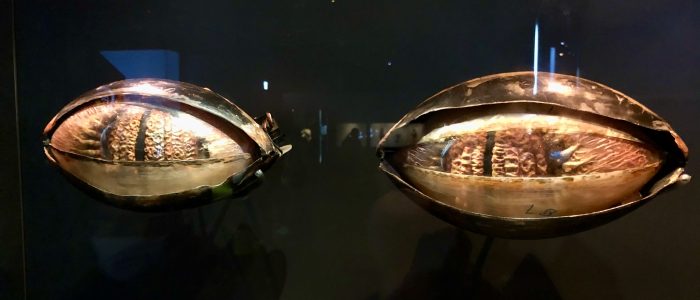
3. Jabba Really Is Dead … Except for His Eyes
It's no secret that the original Jabba the Hutt was a gigantic puppet built for Return of the Jedi. During the film's 1982 production, three different puppeteers — Toby Philpott, David Barclay, and Mike Edmonds — crawled inside a huge fiberglass frame with a green, slug-like skin of latex on top of it. That was Jabba. Philpott, who had worked with Jim Henson on The Dark Crystal and who later retired from the film industry to work in a library in England, operated the alien crime lord's left side and tongue. Barclay controlled the right side and Edmonds worked the tail.
A fourth person stood outside and manipulated Jabba's reptilian eyes by remote control. These are two of the only pieces of Jabba left in existence because the original puppet was dismantled after production wrapped. It turns out there's no coming back from an exploded sail barge.
The bikini that Carrie Fisher wore as Slave Leia and the chains that she used to strangle Jabba are still in good shape. The production prop of Han Solo in carbonite, made from a cast of Harrison Ford's face and hands, is still around, too. Both of them were on display at the exhibition along with Jabba's eyes.
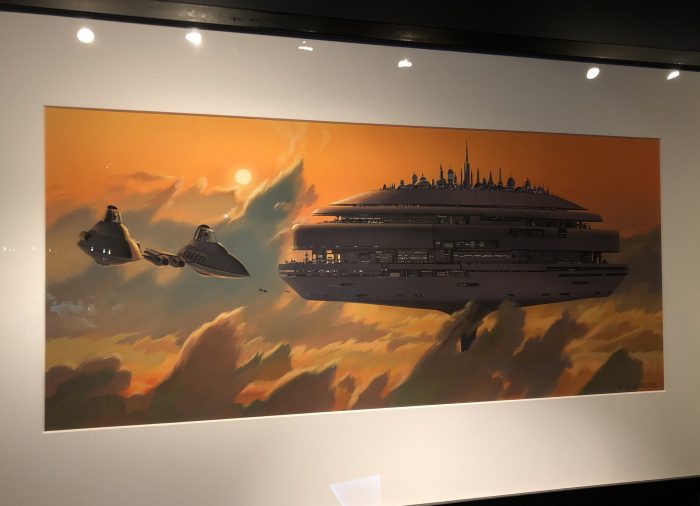
4. Cloud City Started Out as an Imperial Prison
Among all the cool costumes at the exhibition, there was also some original Ralph McQuarrie art on display, including the first-ever production painting that McQuarrie did in January 1975 of C-3PO and R2-D2 leaving their escape pod in the Tatooine desert. George Lucas used this and other early McQuarrie paintings as a visual aid when he made his historic pitch for Star Wars to 20th Century Fox studio executives. The original design for C-3PO had a more Art Deco look, inspired by the Maschinenmensch in Fritz Lang's 1927 German expressionist science-fiction film Metropolis.
Cloud City, the gas mining colony run by Lando Calrissian in The Empire Strikes Back, was first conceived of as the site of a possible Imperial prison for A New Hope. Beautiful Bespin with its orange sunsets and dark secrets floating among the clouds almost came to resemble something more like the prison planet in Alien 3.
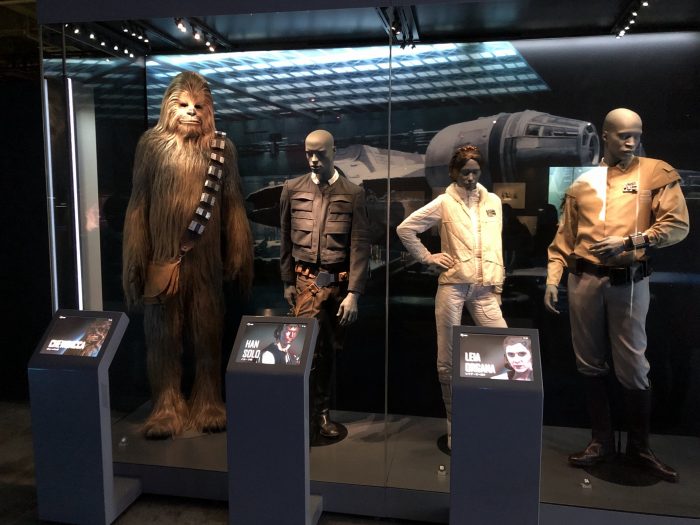
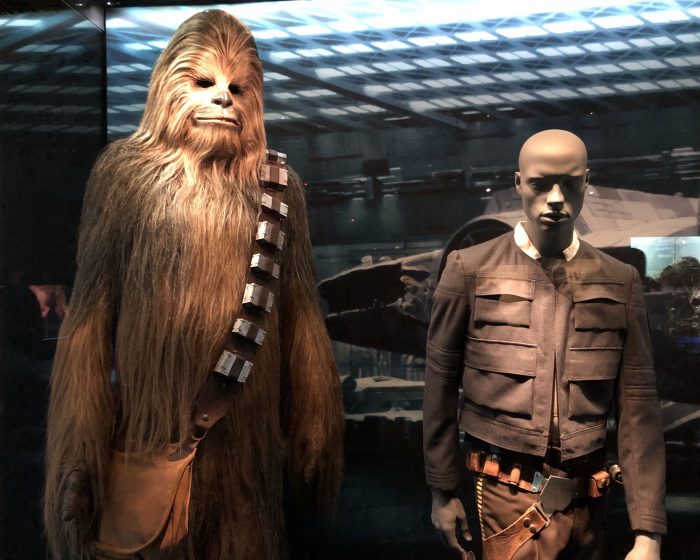
5. The Origin of Chewbacca’s Voice and Shaggy Look
Did you know that sound designer Ben Burtt created Chewbacca's iconic growl by mixing together audio recordings of a walrus and cinnamon bear? Or that the genesis of Han Solo's furry copilot can be traced back to George Lucas's own dog, an Alaskan Malamute named Indiana that used to sit upright in his passenger's seat while he drove around the roads of Northern California? These are things guests could learn from listening to the audio guide at the exhibition. "We named the dog Indiana."
Peter Mayhew's Chewbacca costume from Revenge of the Sith was on display, along with a realistic Yoda likeness and a murderer's row of original trilogy costumes: Luke Skywalker's X-Wing fighter outfit (worn by Mark Hamill in A New Hope), Han Solo's Bespin fatigues and Leia's cold-weather Hoth gear (worn by Harrison Ford and Carrie Fisher in The Empire Strikes Back), and Lando Calrissian's Rebel Alliance General uniform (worn by Billy Dee Williams in Return of the Jedi).
The exhibition also featured an interactive component that allowed you to design your own Star Wars character and make choices that would shape his or her identity. I designed a Wookie named Chubaka: a phonetic, Tokyo-appropriate Star Wars pun on the Japanese words chu or chuu and baka, which together translate out to mean "middle idiot." (You can read more about the influence of Japanese phonetics on Star Wars here.)
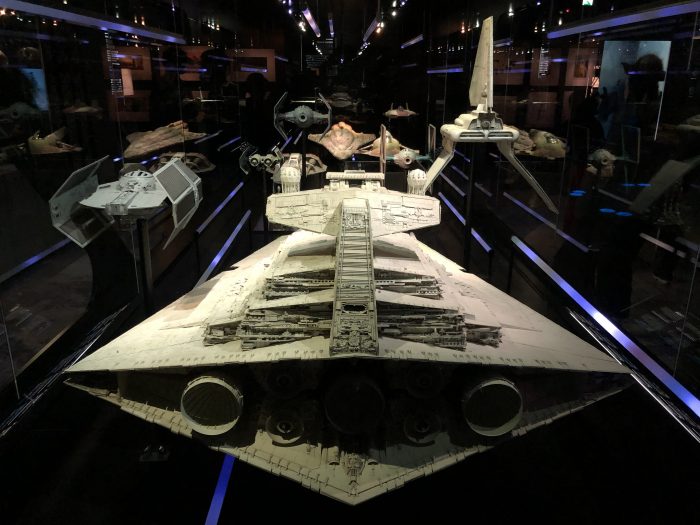
6. The Elephants in the Vehicle Design Room
The lumbering Gorilla Walkers at the end of The Last Jedi weren't the only bad-guy vehicles influenced by members of the animal kingdom. Sound designers combined an elephant's scream with the noise of a car driving on a wet road to produce the instantly recognizable roar of Imperial TIE Fighters. The Industrial Light & Magic team also studied elephants in motion to perfect the movements of the original AT-AT Walkers in The Empire Strikes Back.
Visual effects artist Joe Johnston, who would eventually go on to direct films like Honey, I Shrunk the Kids and Captain America: The First Avenger, provided concept art for such things as the Death Star surface and its laser cannons.
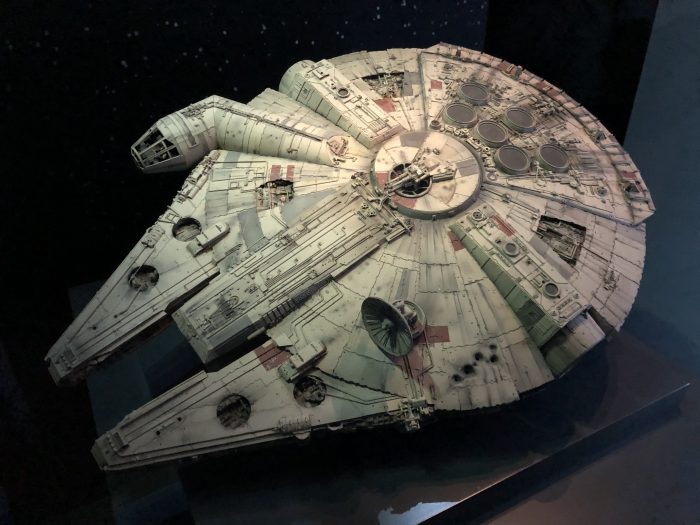
7. Where Can I Get a Millennium Falcon Burger?
Johnston also inked detailed concept art for the Millennium Falcon. Some of the original production models used to capture footage of the Falcon and other ships were on display at the exhibition, as well. According to the display placards, George Lucas based the Falcon's radial shape on a hamburger, of all things. The asymmetrical cockpit was leftover from an earlier design for a different-looking ship, while the mandibles were added to give the Falcon a readily identifiable front and back.
Is there any justifiable reason why we haven't yet seen elaborate Millennium Falcon Burgers flying out of food trucks or restaurant chains? Chefs of the world, get your priorities straight. Someone needs to get on top of the Falcon Burger pronto.
8. Runny Makeup Determined the Color of Pilot Visors
There's a reason the visors on the helmets of Rebel pilots were tinted yellow. It's because the heat was so intense during the filming of the cockpit scenes that the makeup started to run on the actors' faces.
At the exhibition, visitors could get in close enough to see the battle-damaged scuffs and visor cracks on the helmets. A bust of Darth Vader's unhelmeted mask was on display, too. It's enough to make an aspiring conventioneer want to shell out big money for their very own high-end Anovos Star Wars helmet replica. Anyone got a few hundred smackeroos lying around that they haven't already spent on 6-inch Star Wars: The Black Series action figures? No? Well, alrighty then. Onward to the penultimate prequels section ...
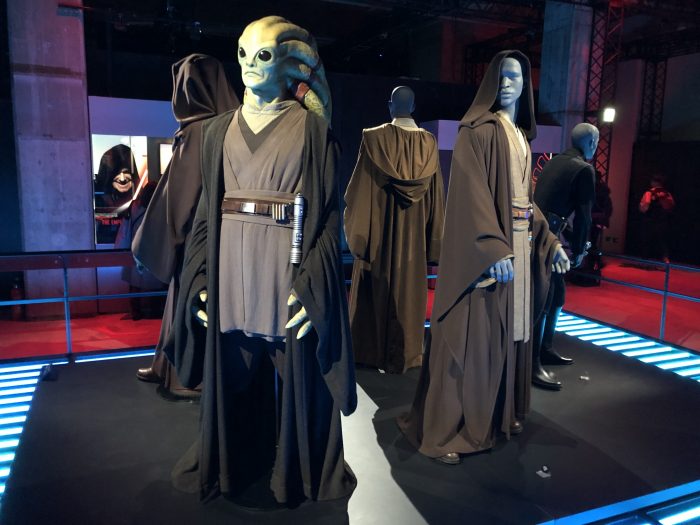
9. Mace Windu Swings Purple Because He's a Bad Mofo
Not every costume at the exhibition was behind glass. Open displays in the last couple of rooms showed off a number of original costumes from the prequels, including three different outfits worn by Natalie Portman as Queen Amidala. From behind rails, Hayden Christensen's Sand People-hunting swoop bike and darker brown Revenge of the Sith robes also shared the same air as visitors, as did Mark Hamill's black Luke costume from Return of the Jedi. Ewan MacGregor's Obi-Wan costume and Matt Sloan and Ben Cook's costumes as supporting Jedi Masters (respectively, Plo Koon and the tentacle-headed Kit Fisto) rounded out the threads on display.
One interesting fact that I had maybe heard in the past but forgotten about was that Samuel L. Jackson requested his own unique lightsaber from George Lucas when he signed on to play Mace Windu. That's how he came to bear the only major movie lightsaber that's not red, blue, or green. Purple is and ever shall be Mace Windu's laser-sword color. I like to believe that Jackson had a pocket in his Jedi robes for his Pulp Fiction wallet and that his lightsaber handle was inscribed with the PG-friendly words, "Bad Mofo," but that's just my own wishful thinking.
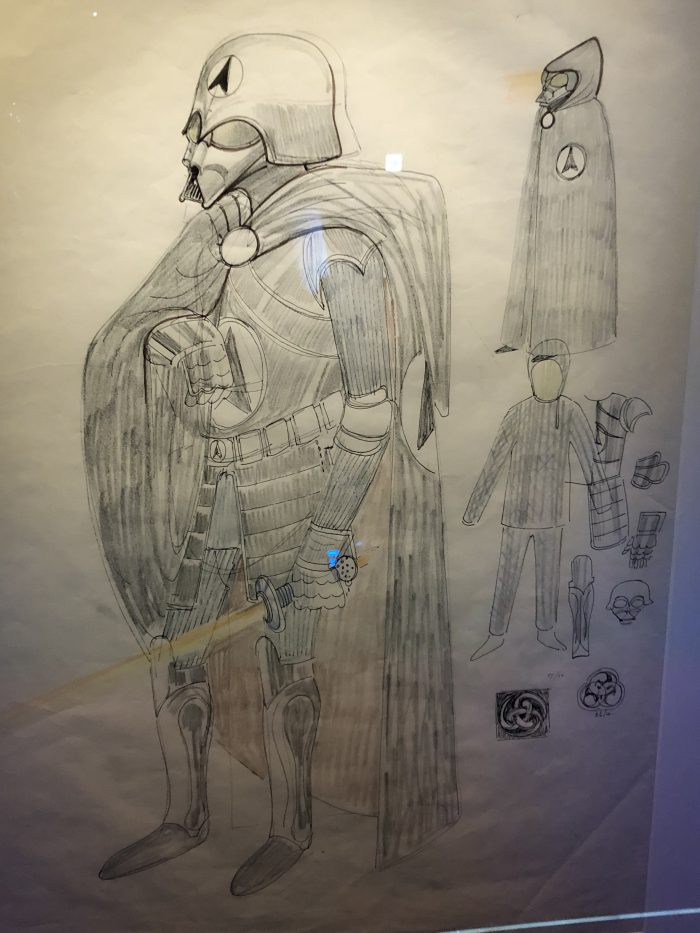
10. The Evolving Nature of Darth Vader and His Castle
The climactic piece of the exhibition was a glowing red-and-blue display with David Prowse's O.G. Darth Vader costume from Return of the Jedi. An early John Mollo sketch of Vader shows the Sith Lord wearing a samurai-like outfit with a more pronounced hilt on his lightsaber and a German World War II helmet and gas mask over his head. Thinking that it would be situated in the snow, McQuarrie had drawn up a design for Vader's castle as far back as The Empire Strikes Back; but of course, we wouldn't actually see the castle onscreen until years later, when it showed up on the lava planet of Mustafar in Rogue One: A Star Wars Story.
There's no telling where on the global map Star Wars Identities: The Exhibition will pop up next. It's toured the world for almost eight years now. The first exhibition took place in Montreal from April to September 2012, and we broke the news about it way back in November 2011. There was a two-month gap between the Sydney and Tokyo exhibitions, so keep an eye on the official website, and with any luck, Star Wars Identities will be coming to a city near you in the future.

